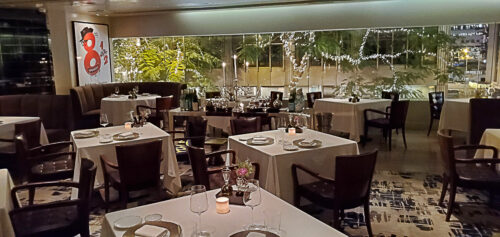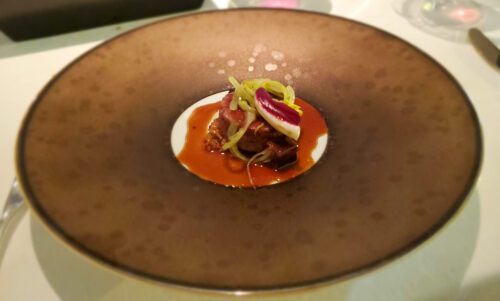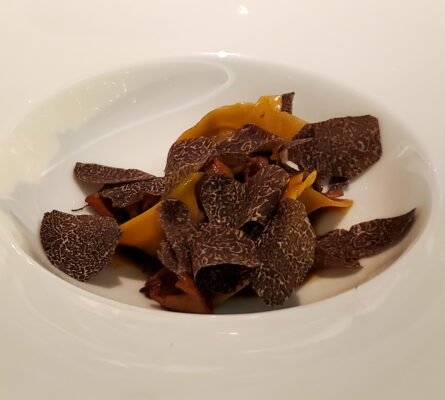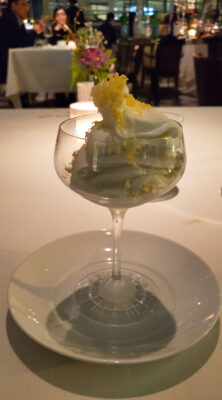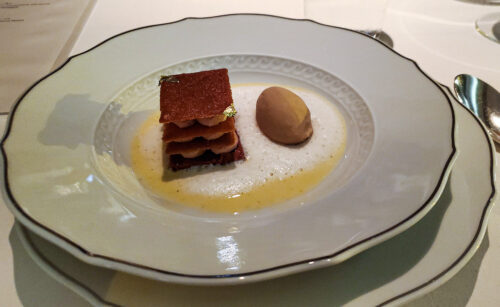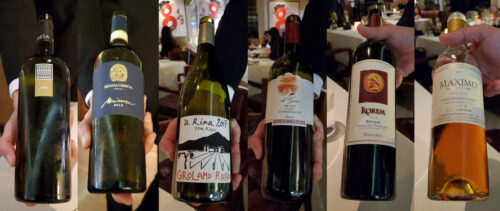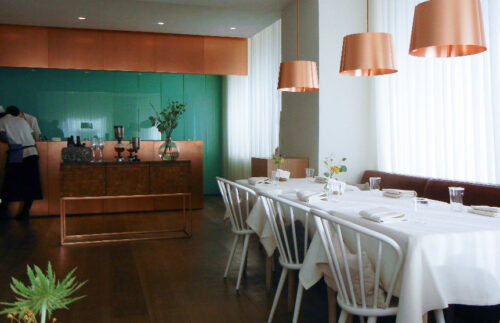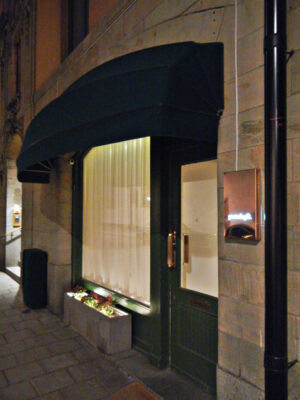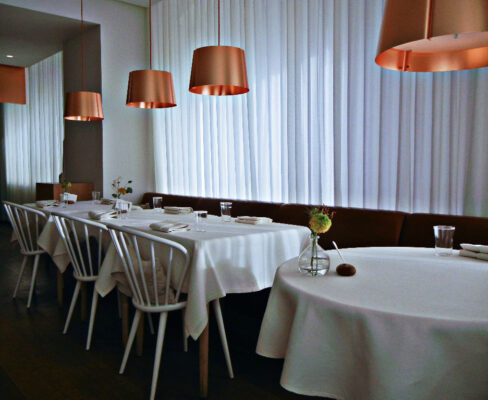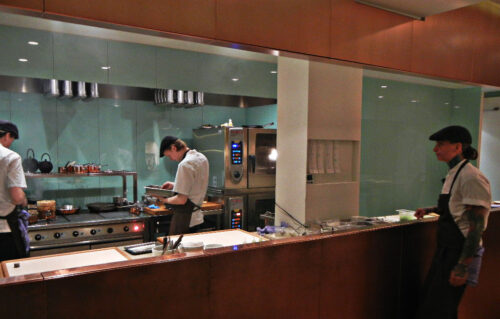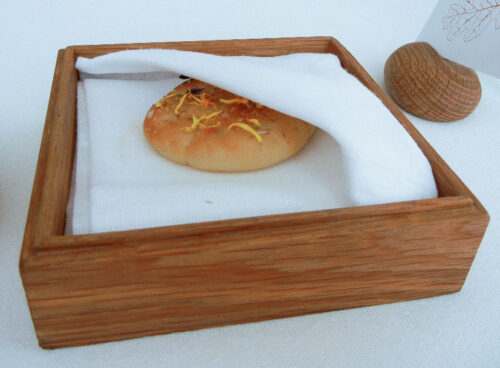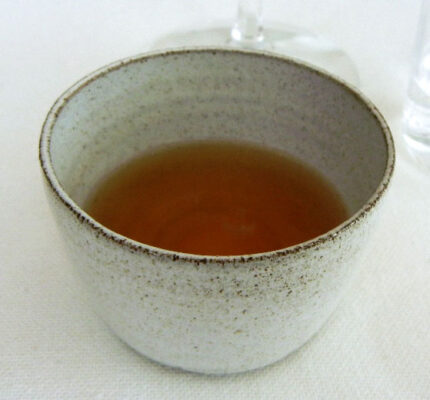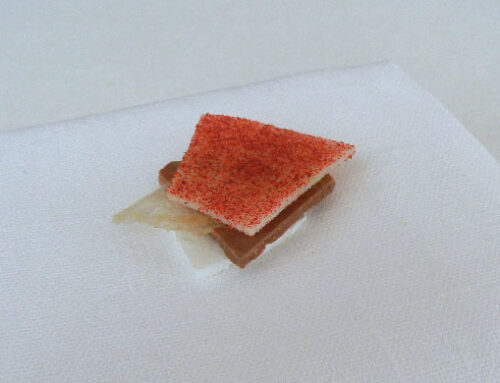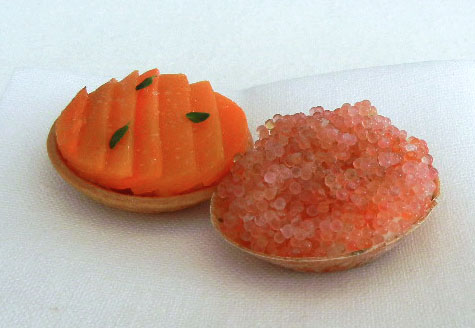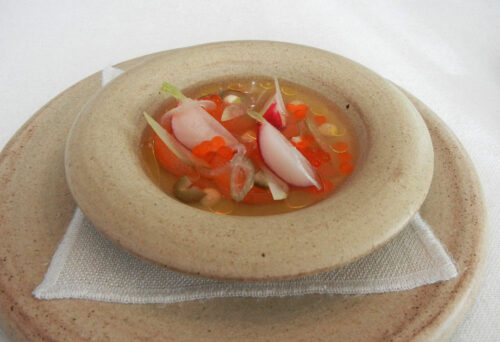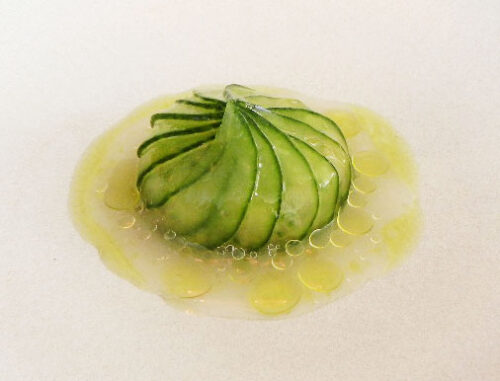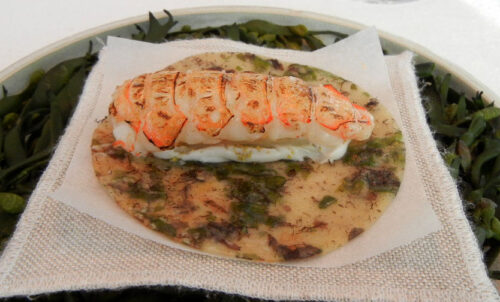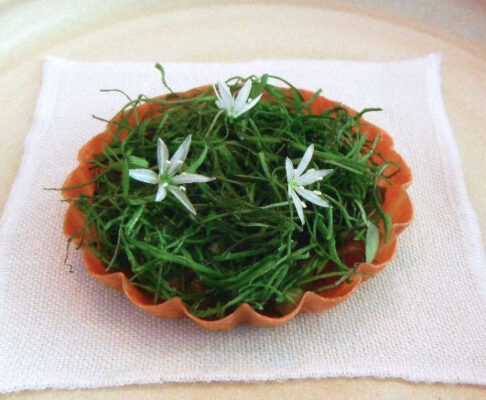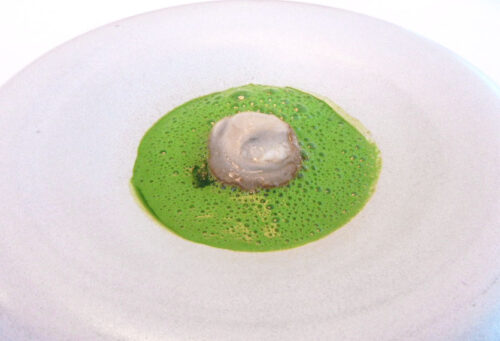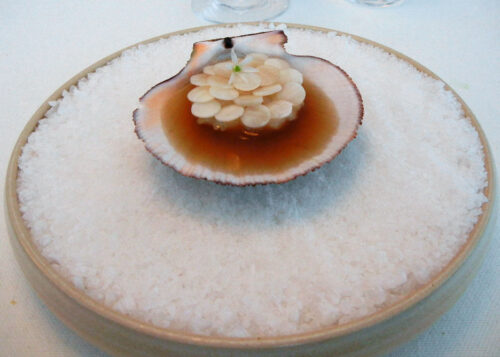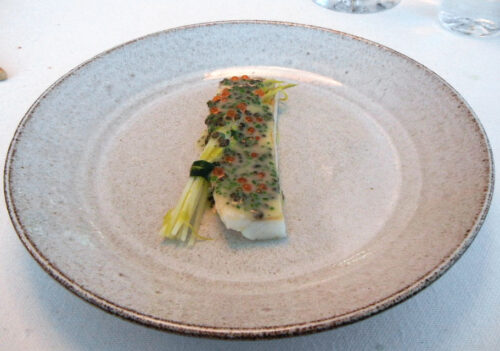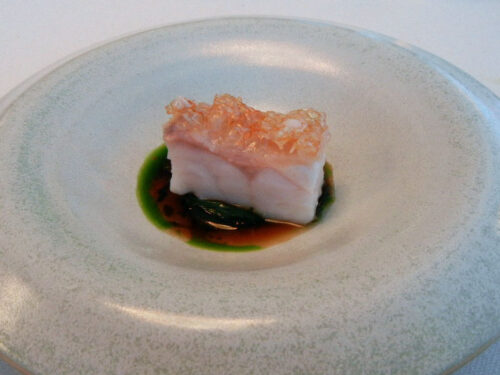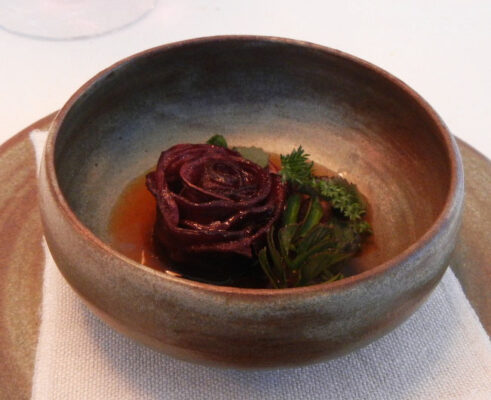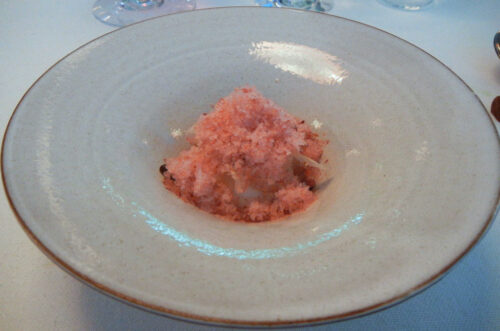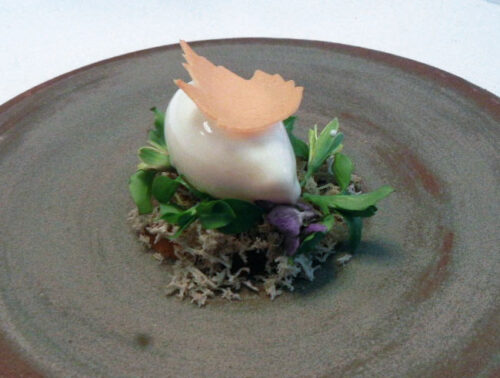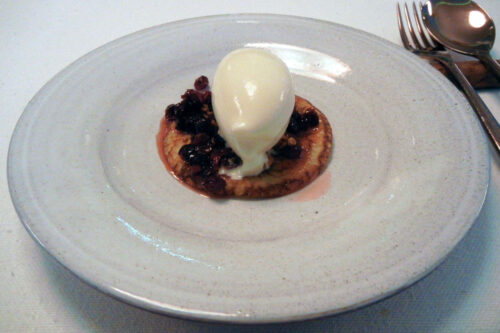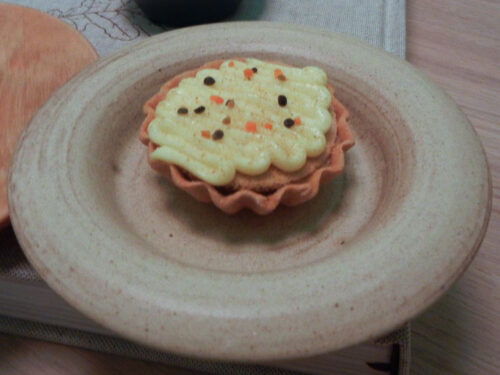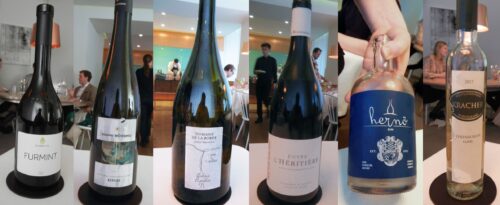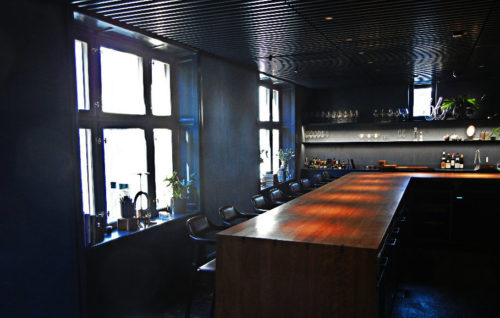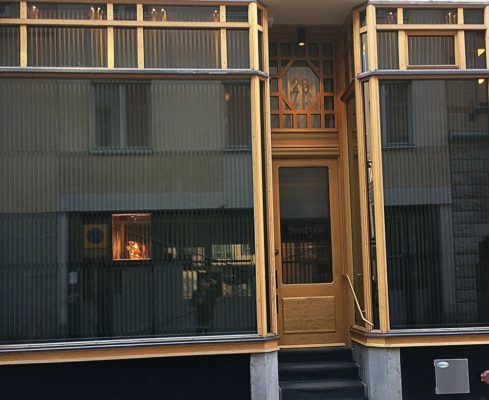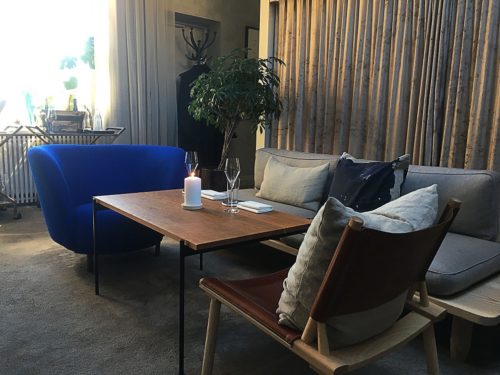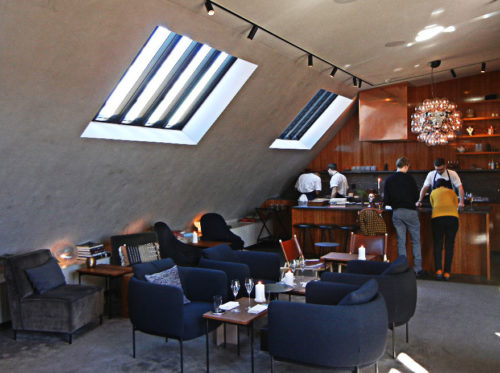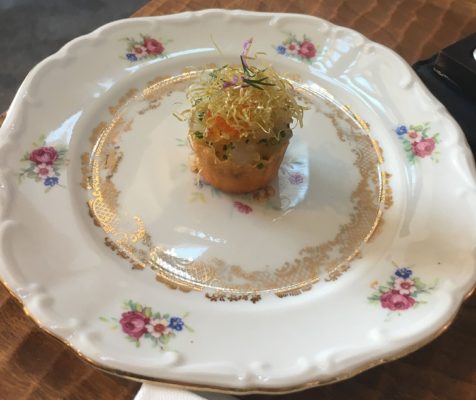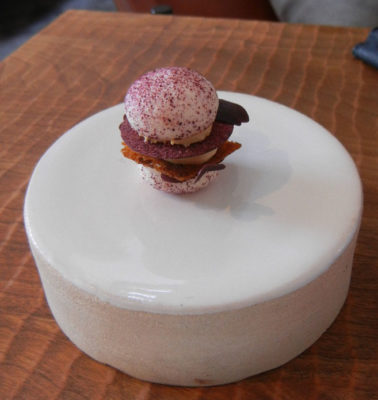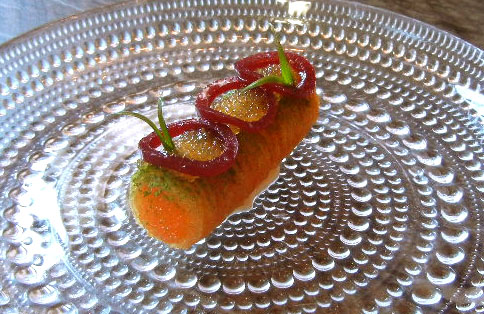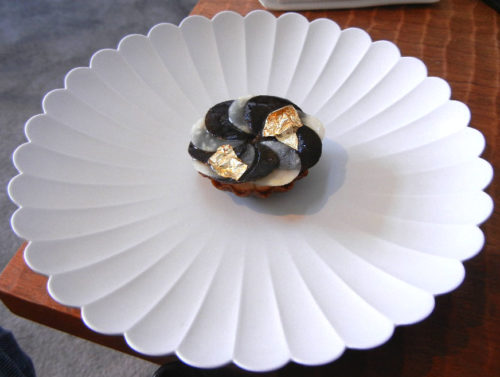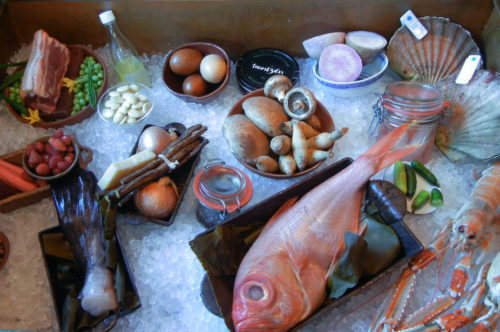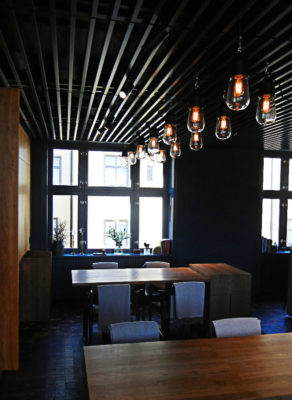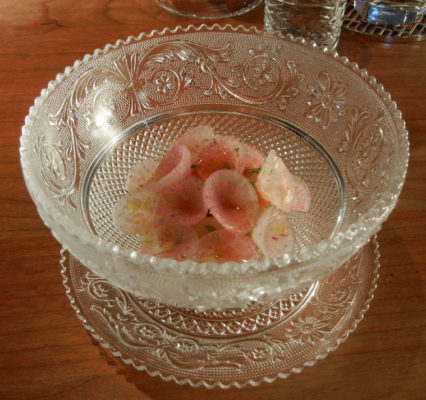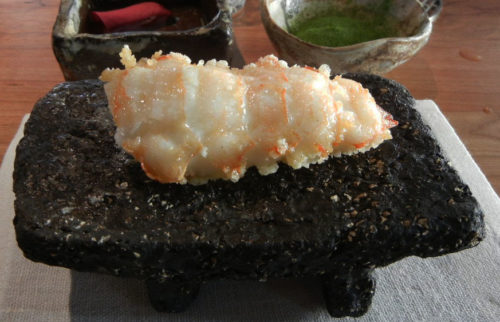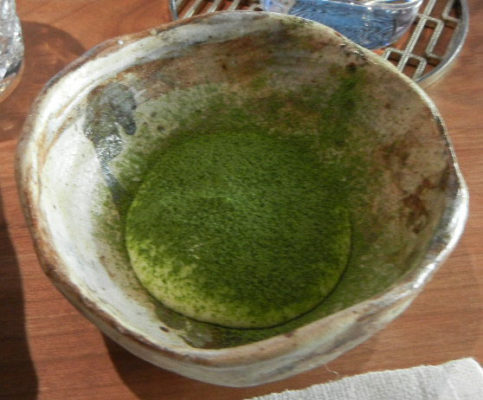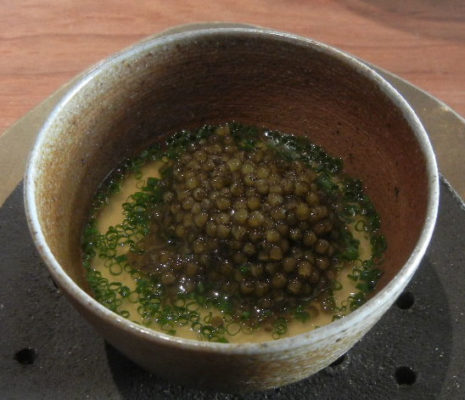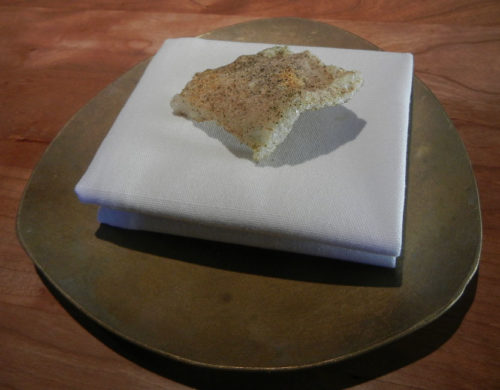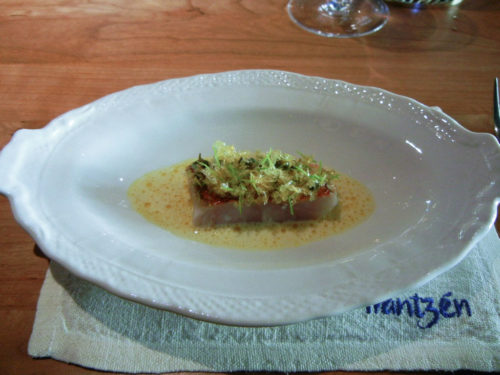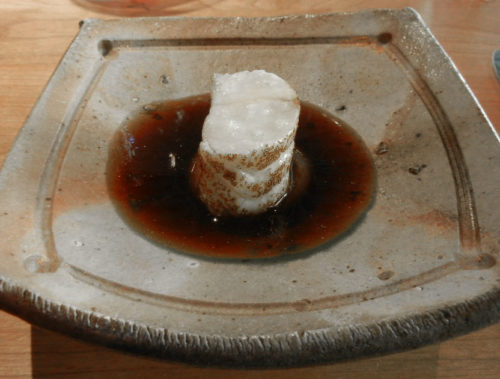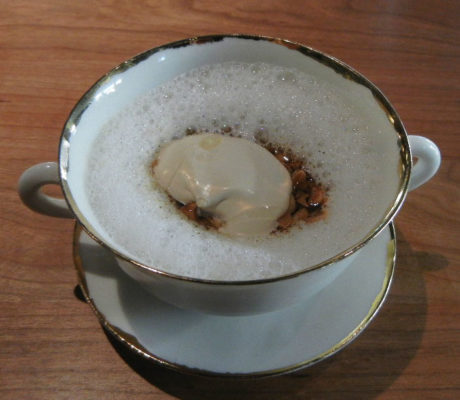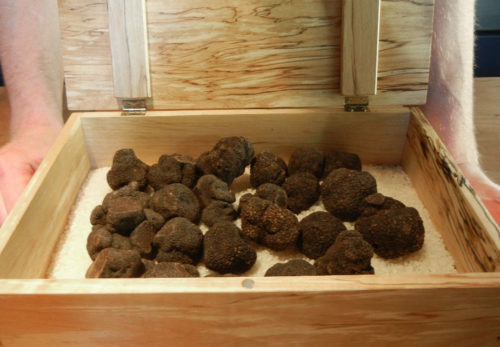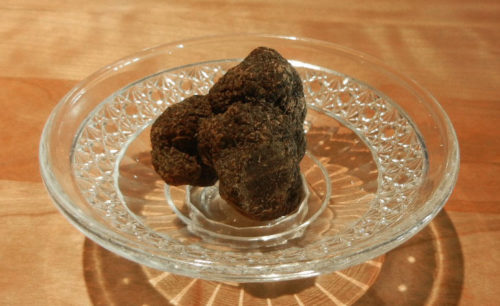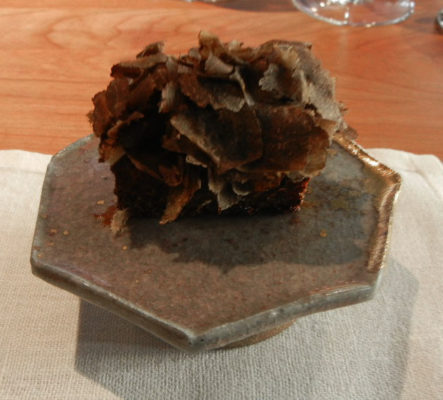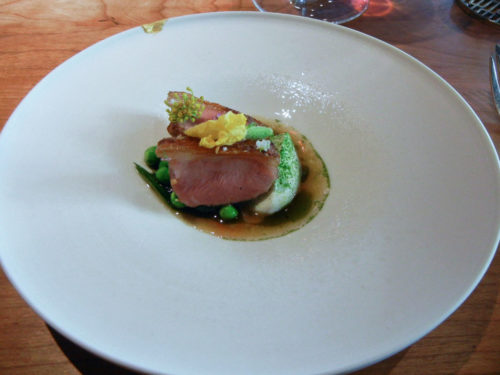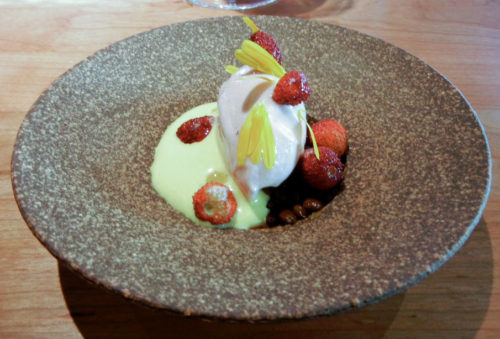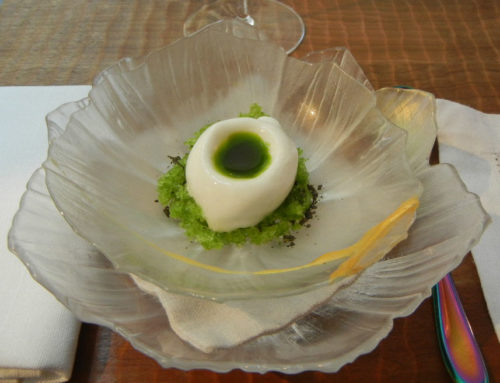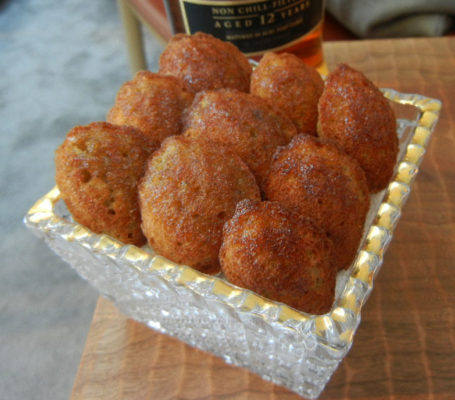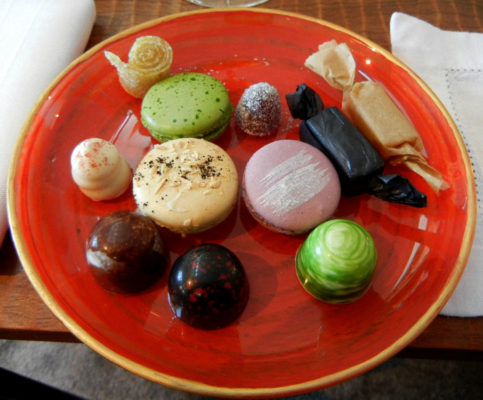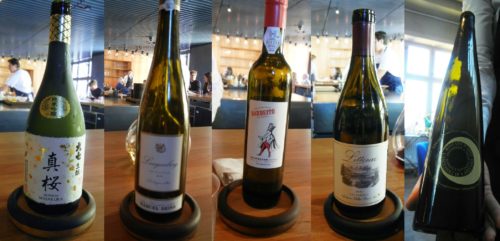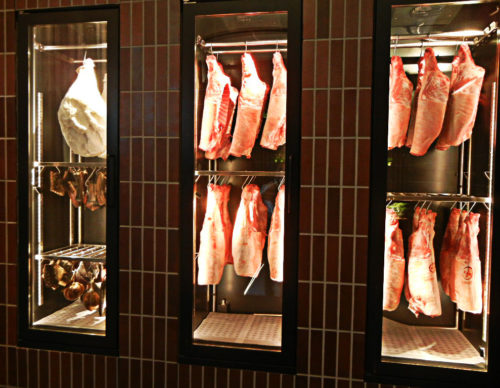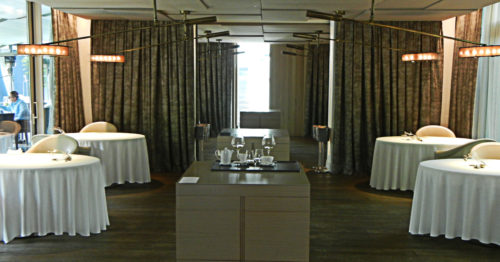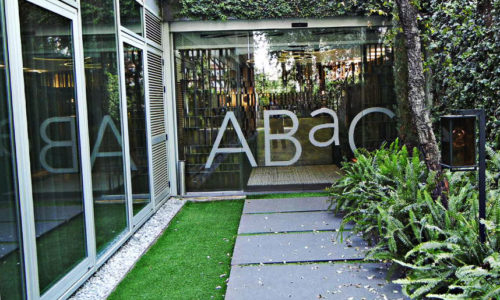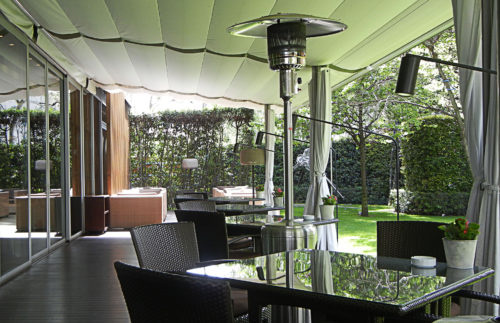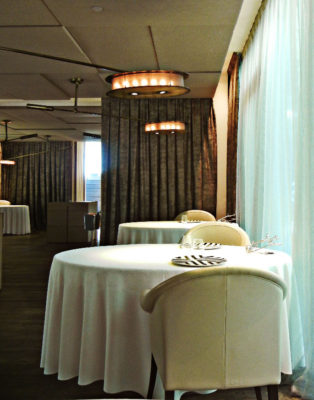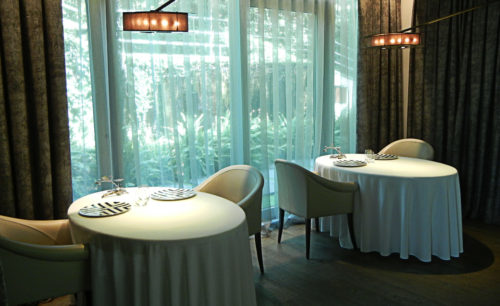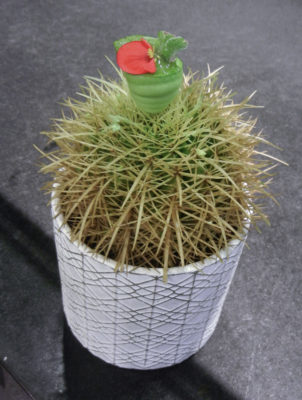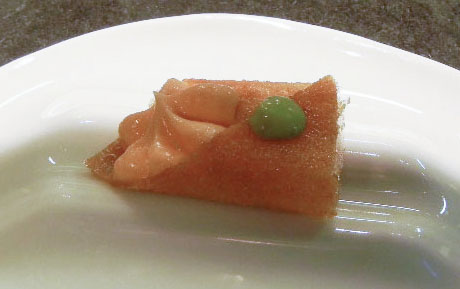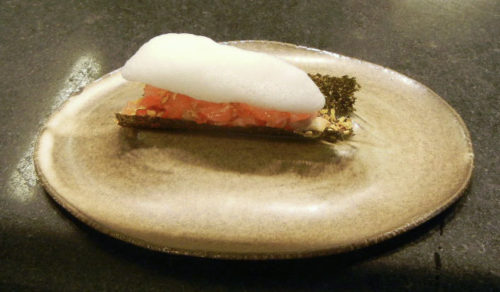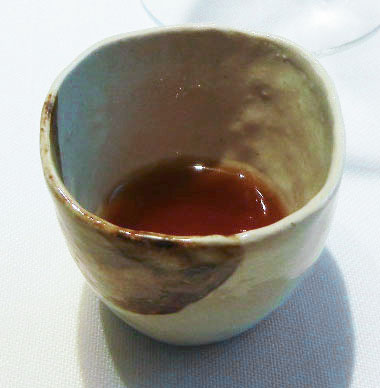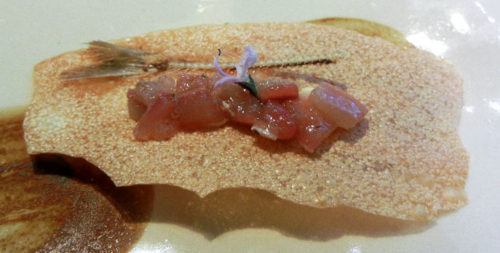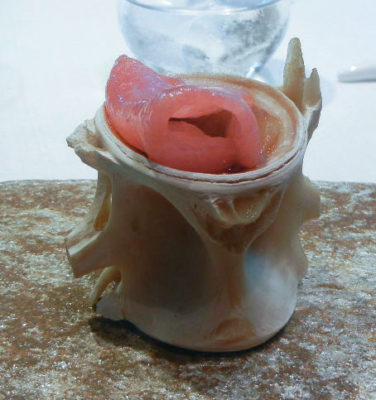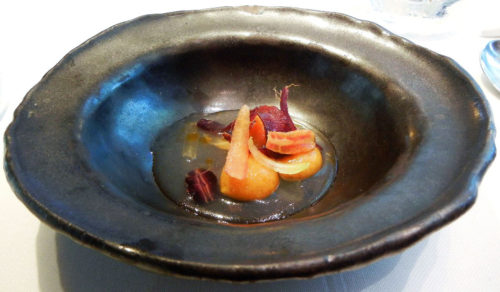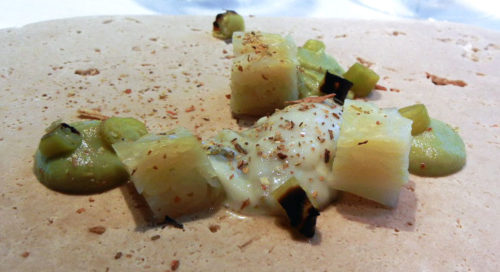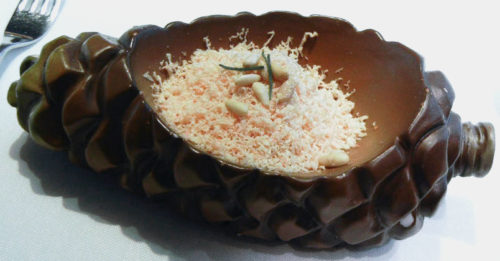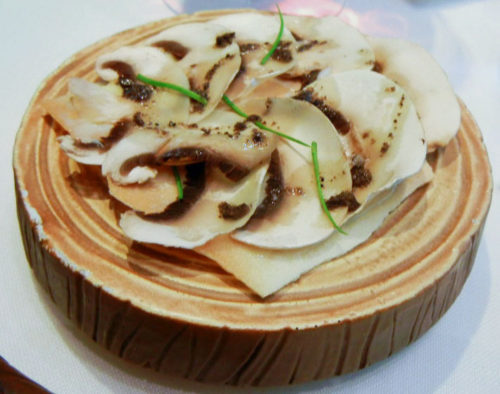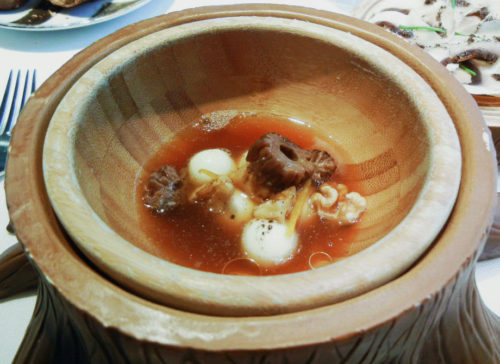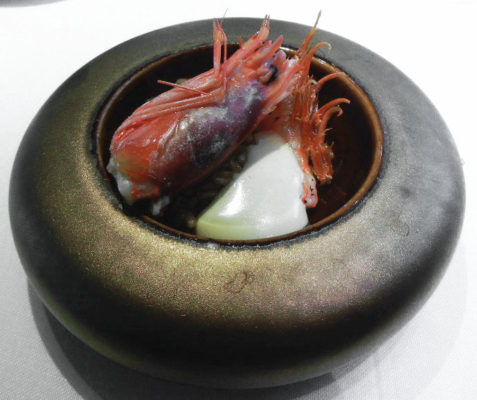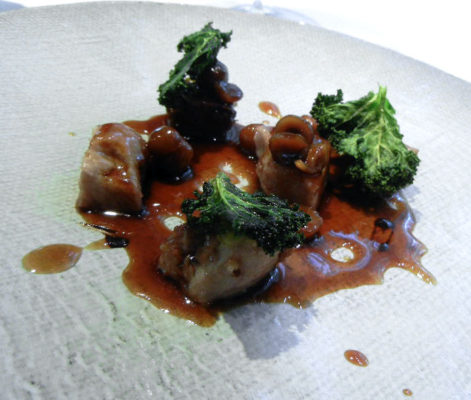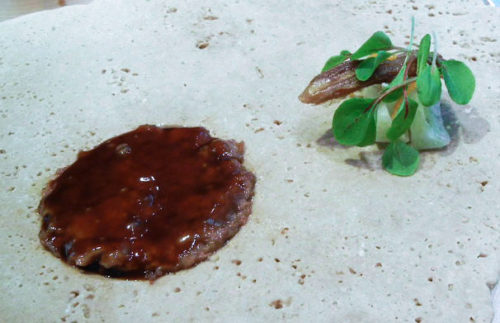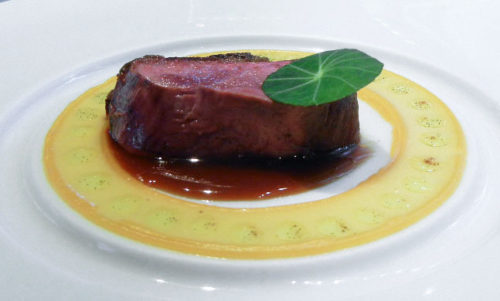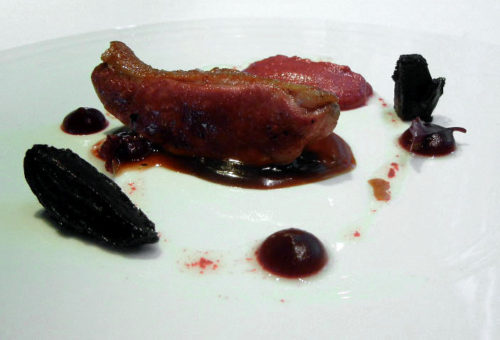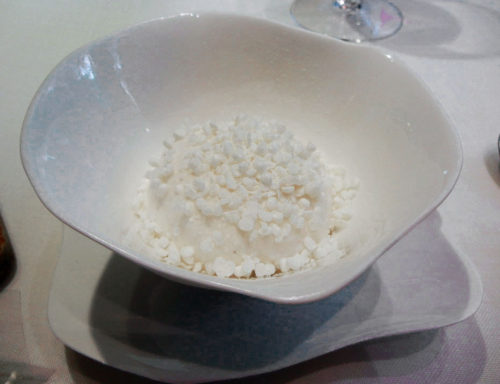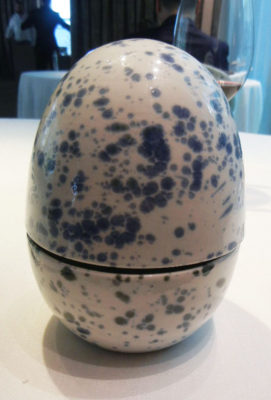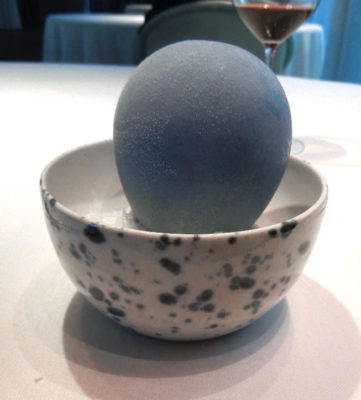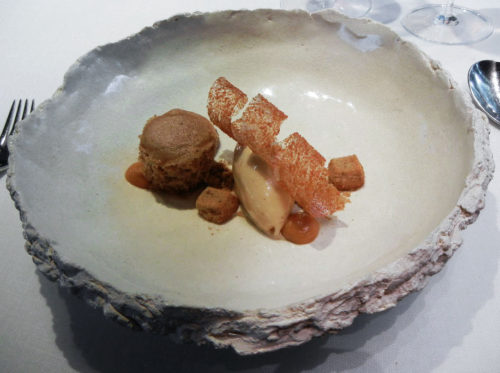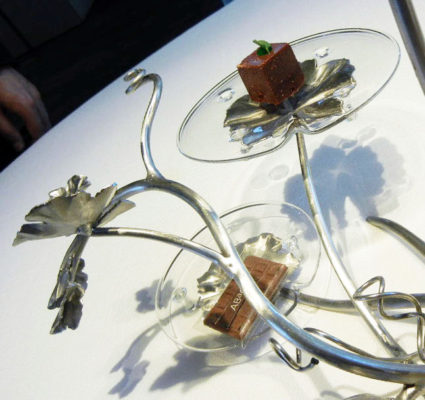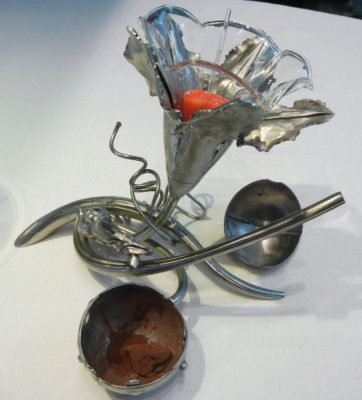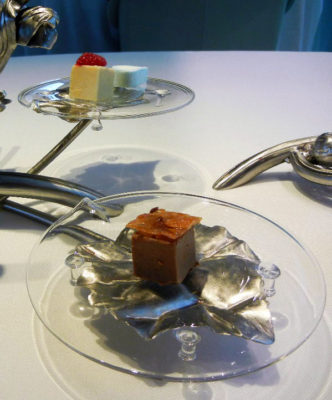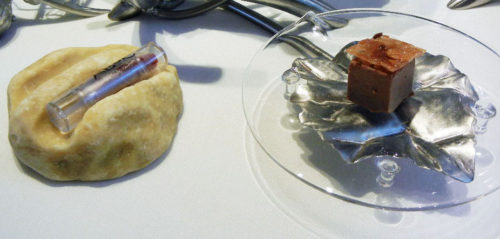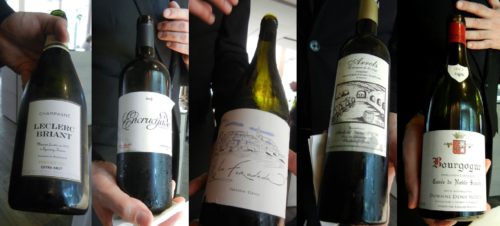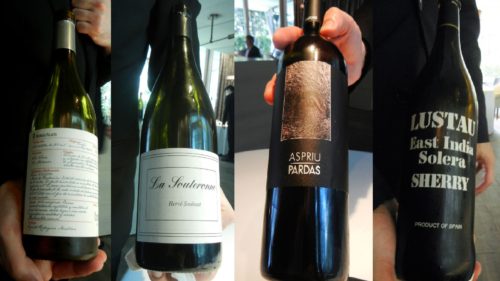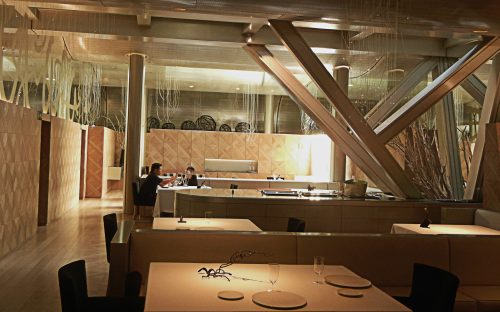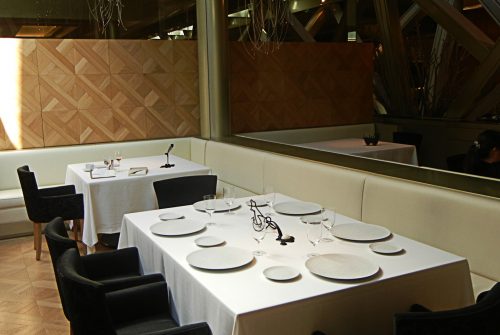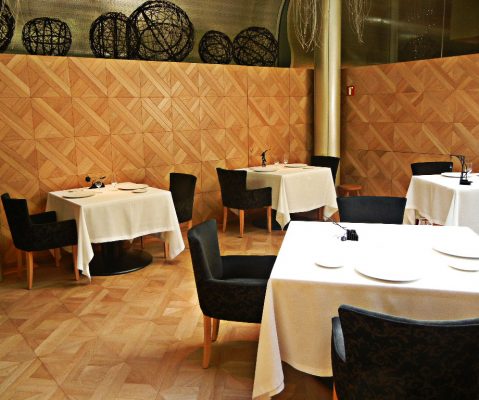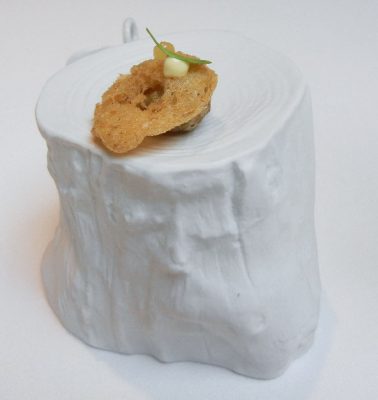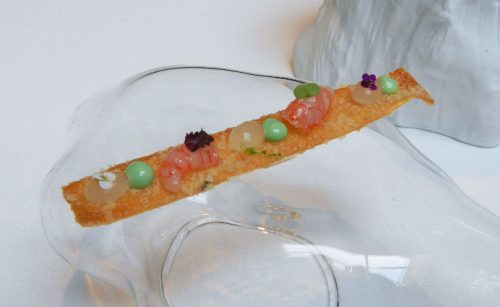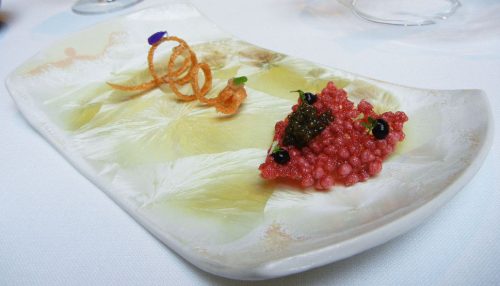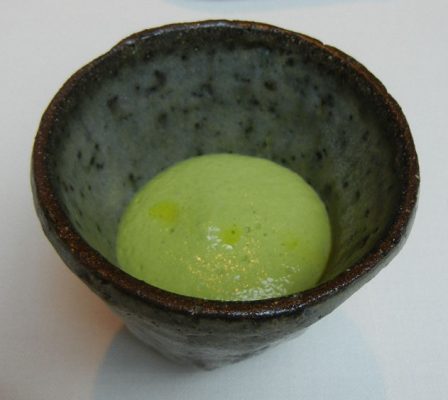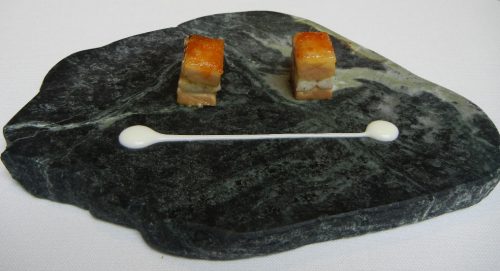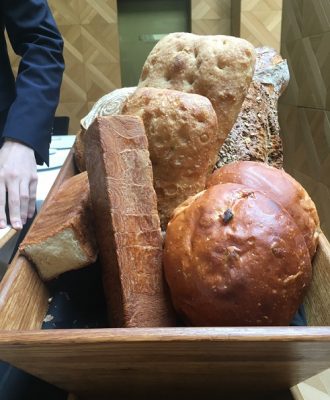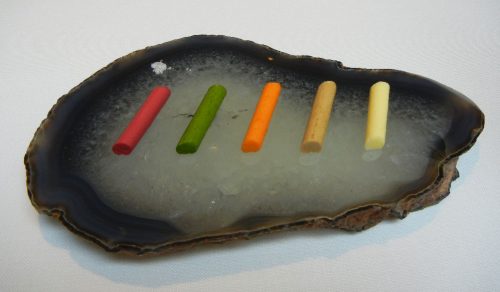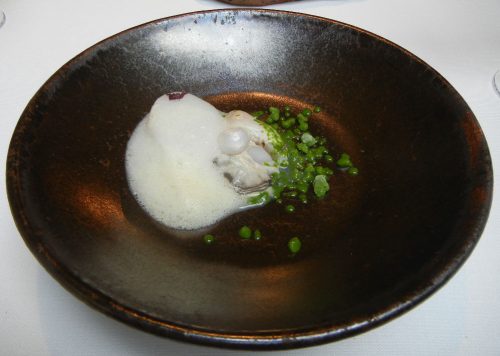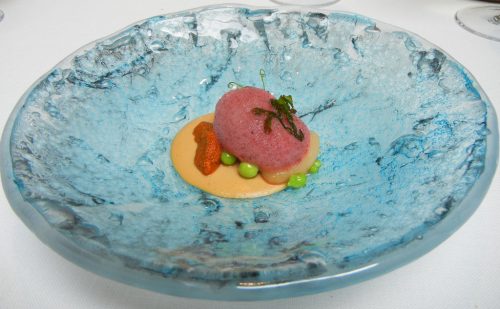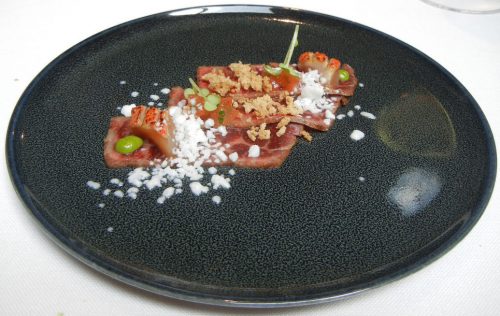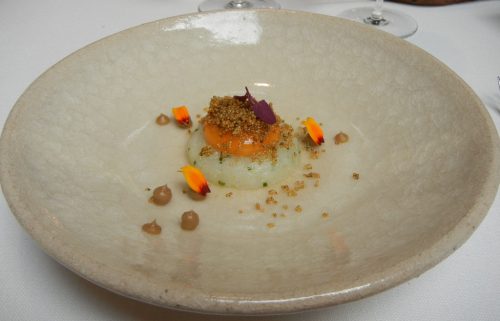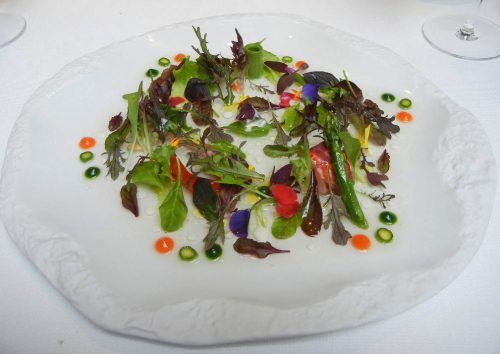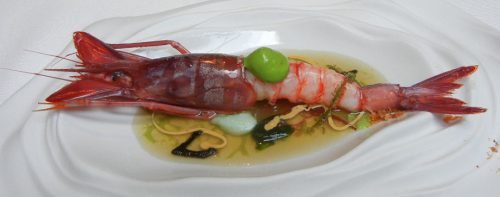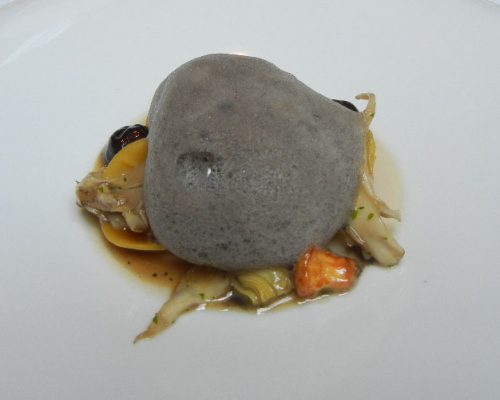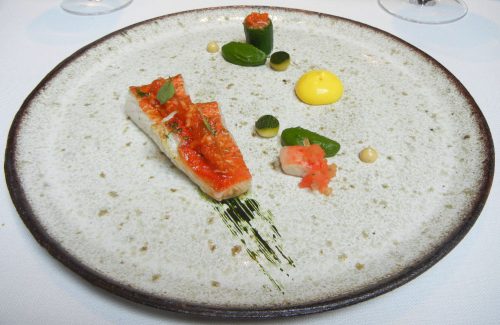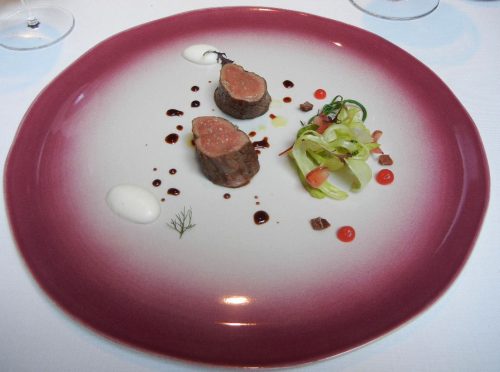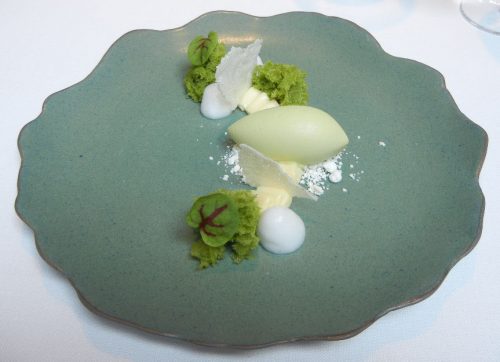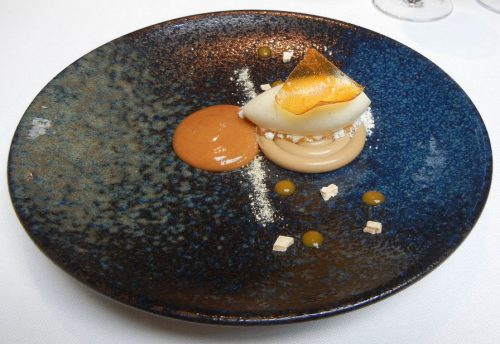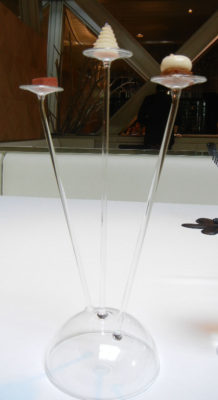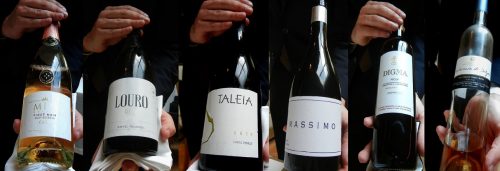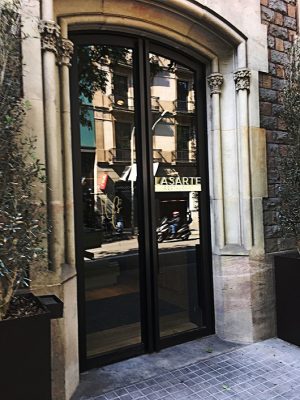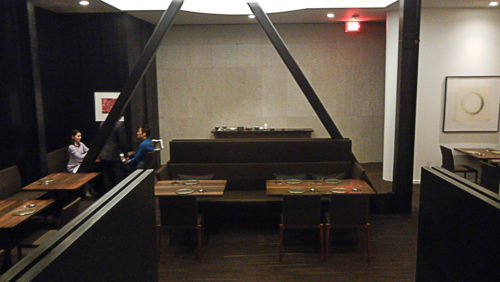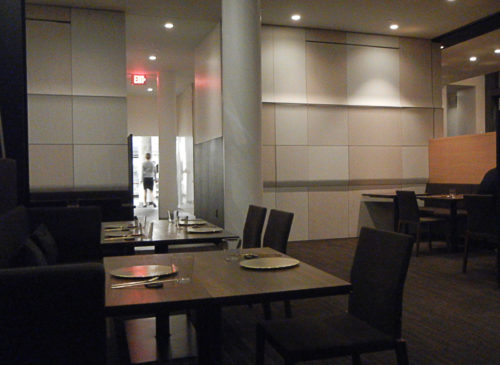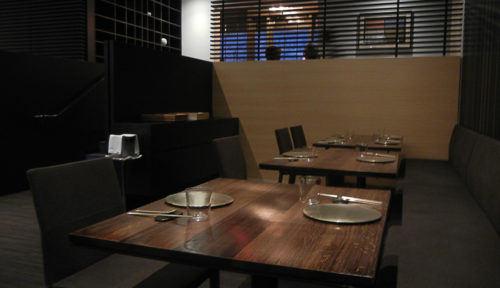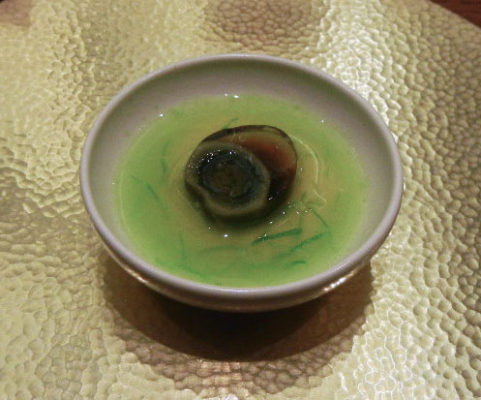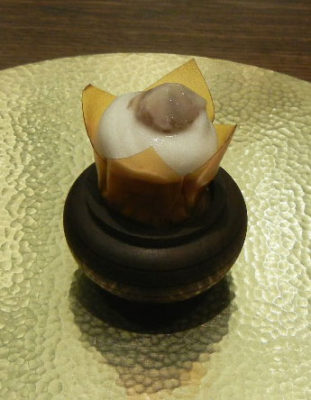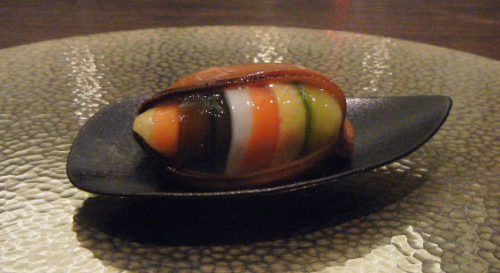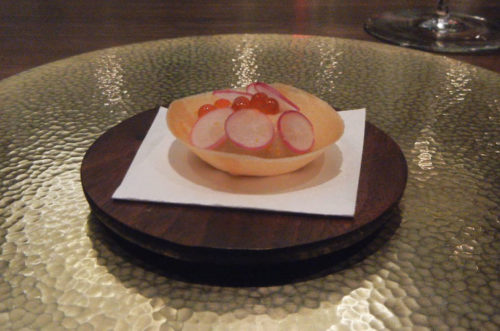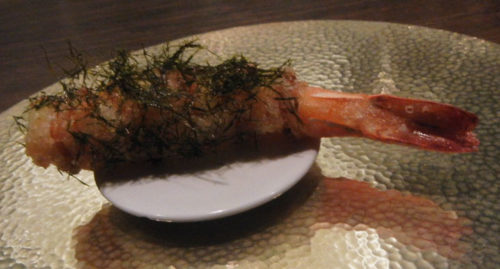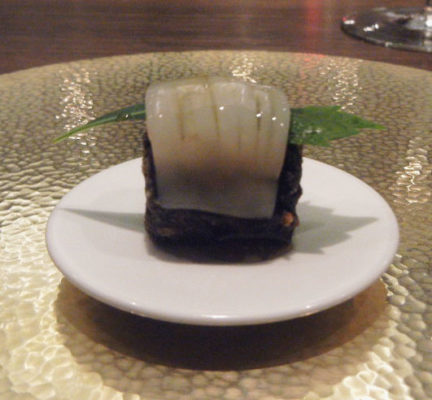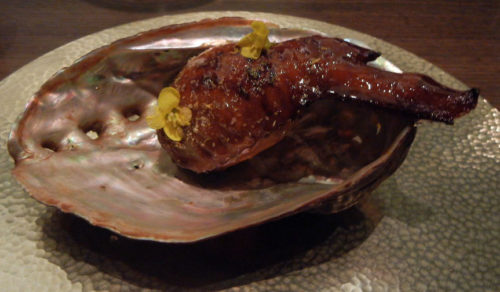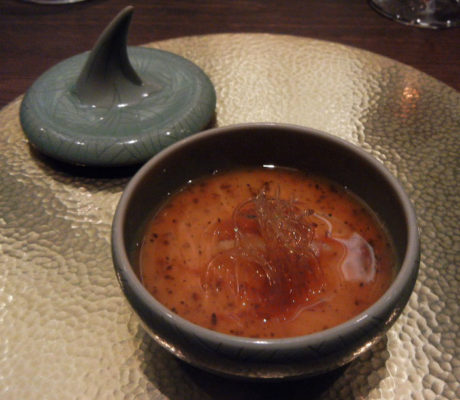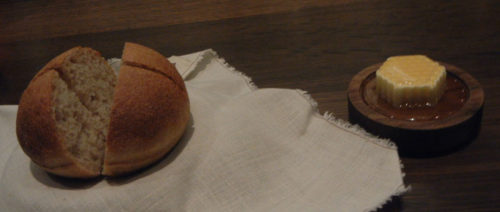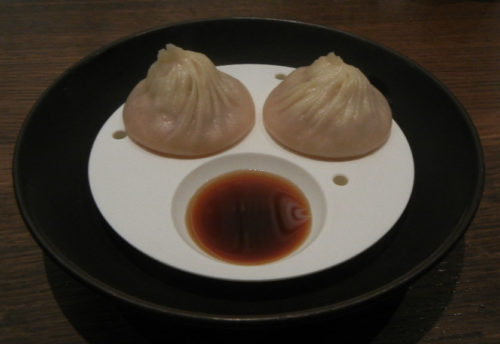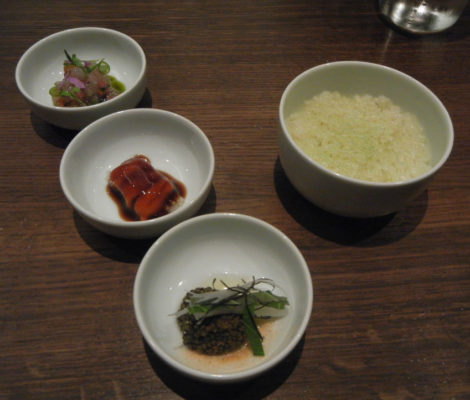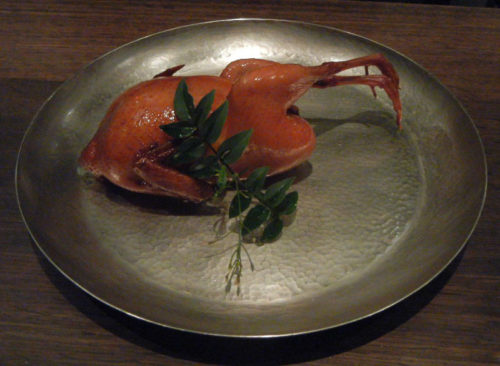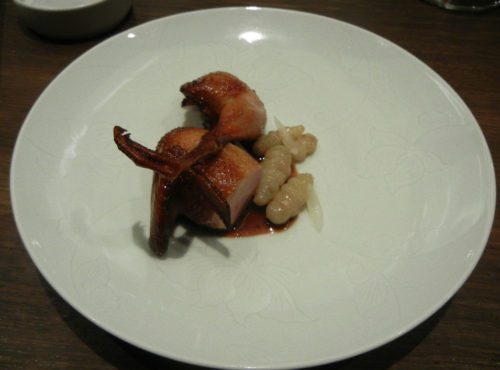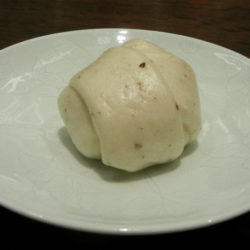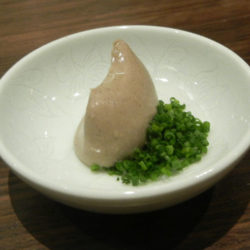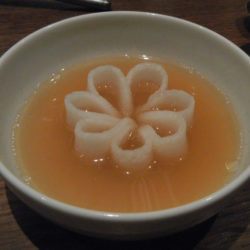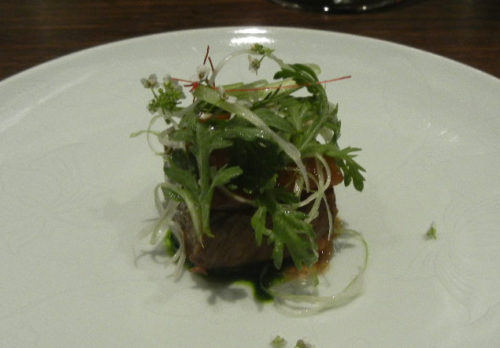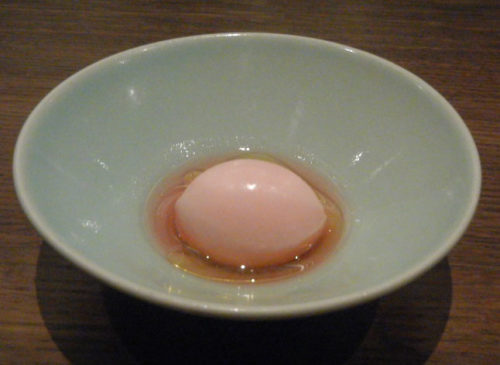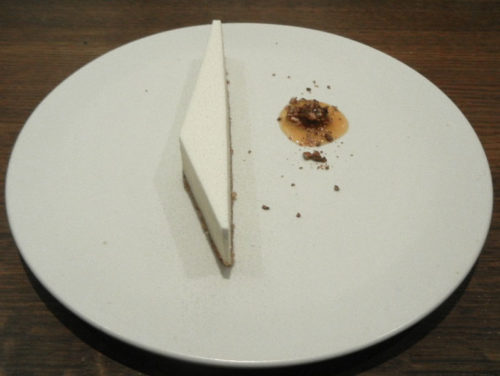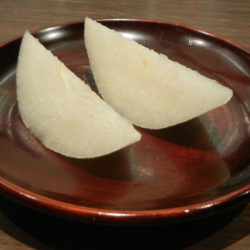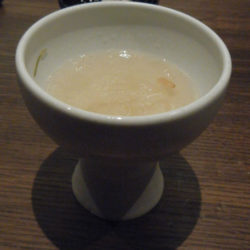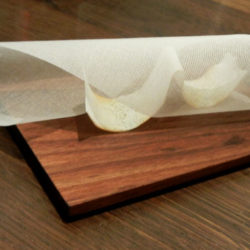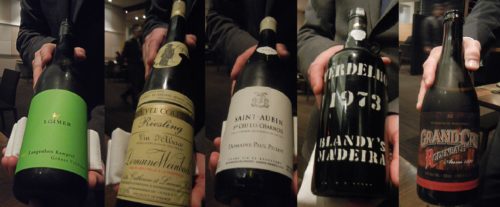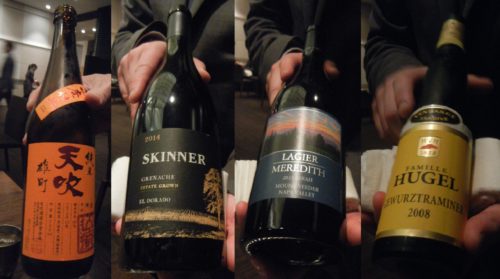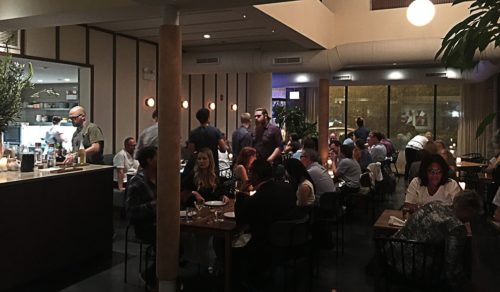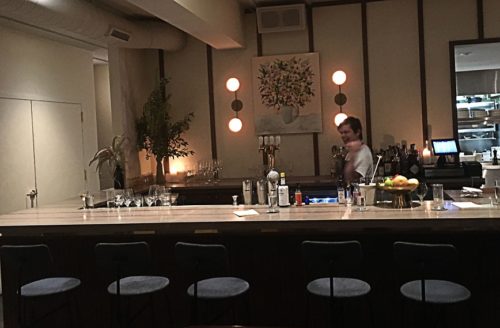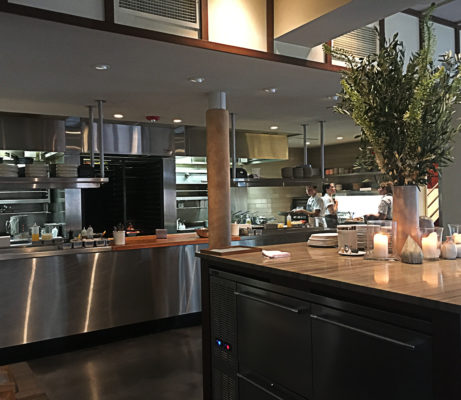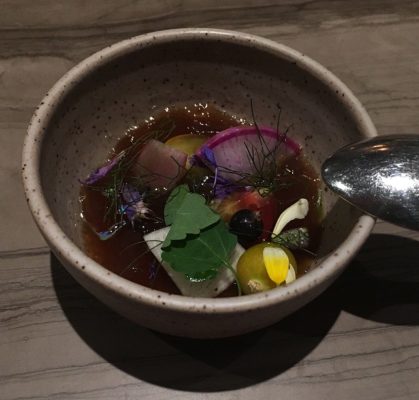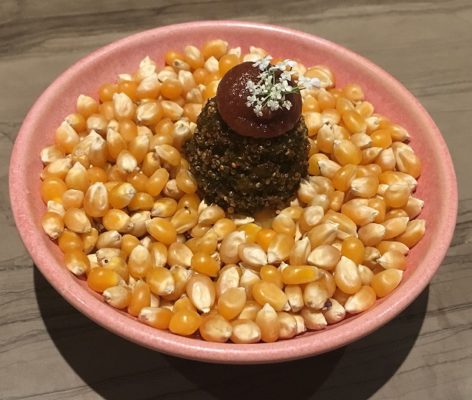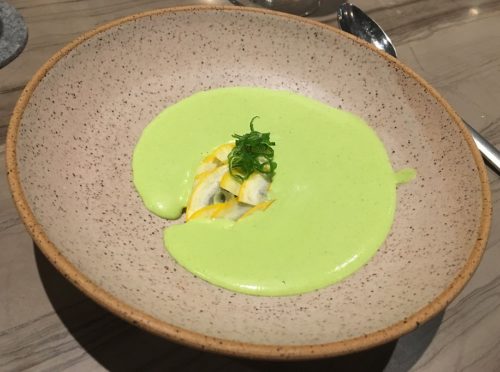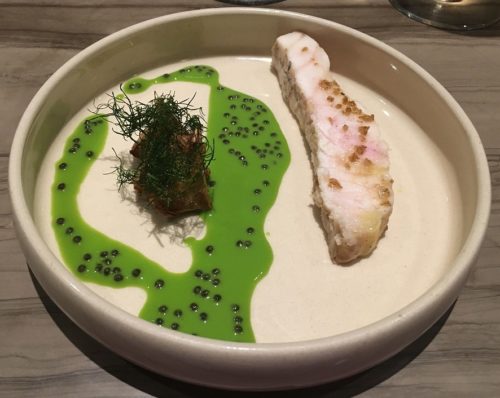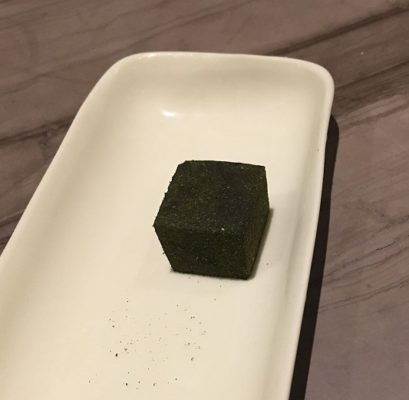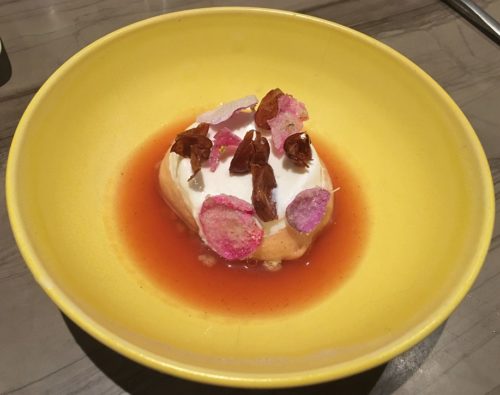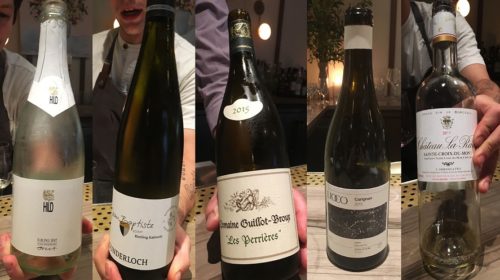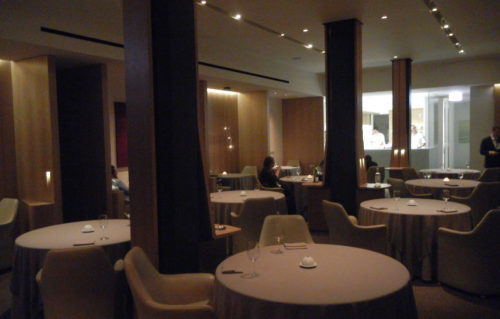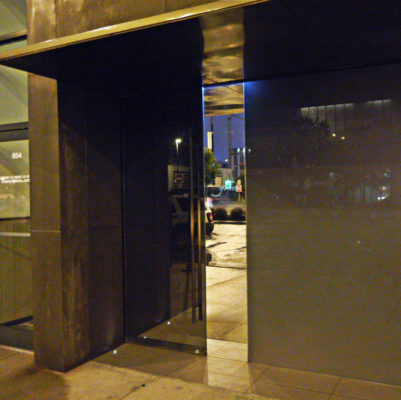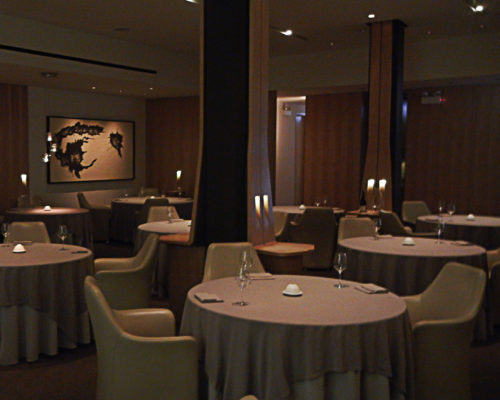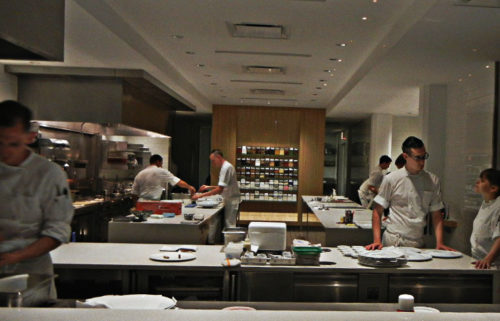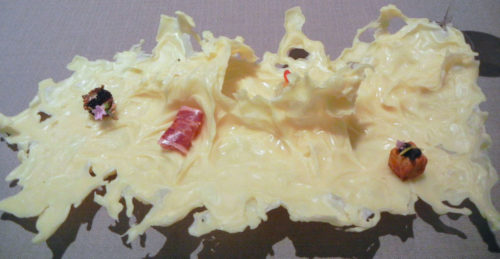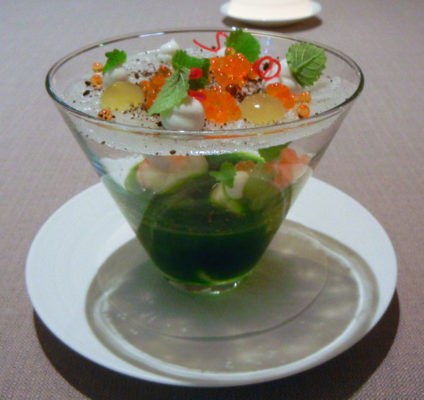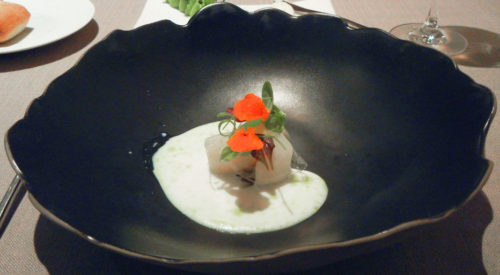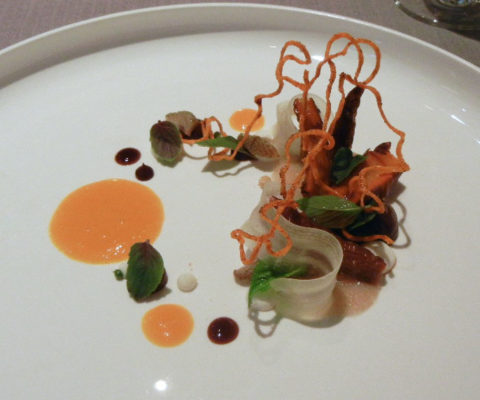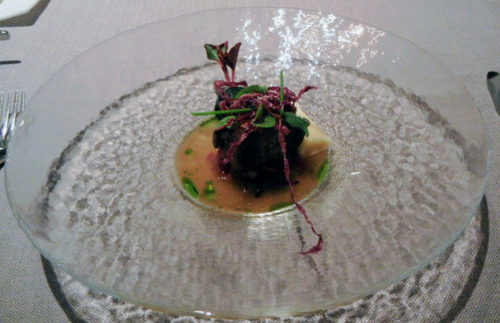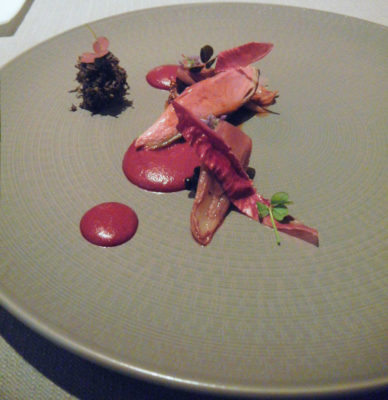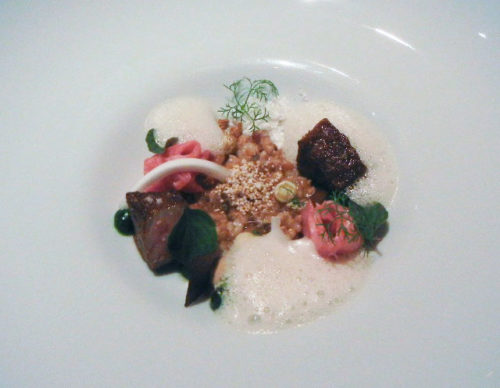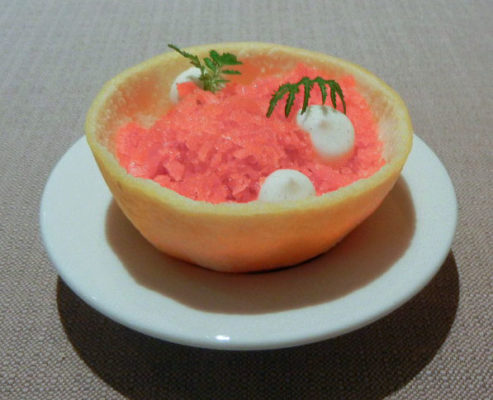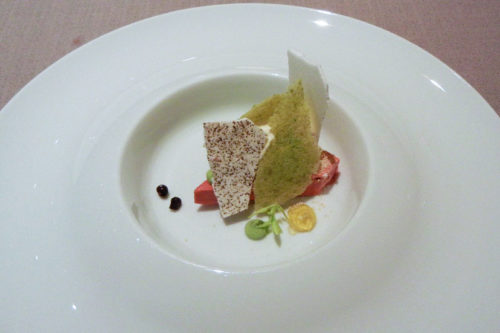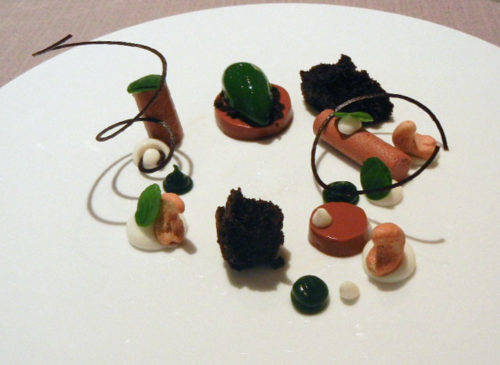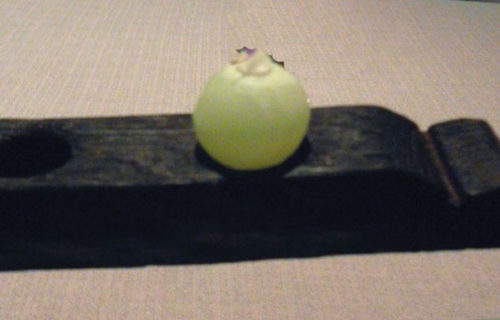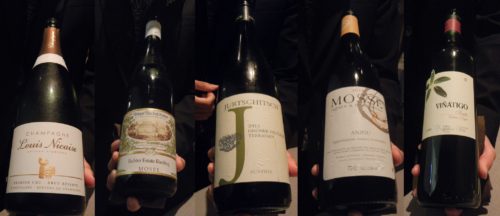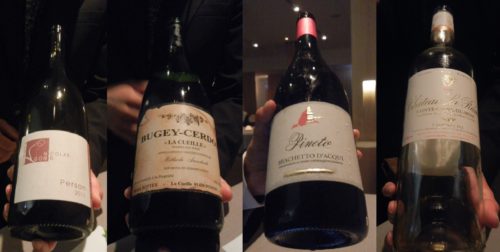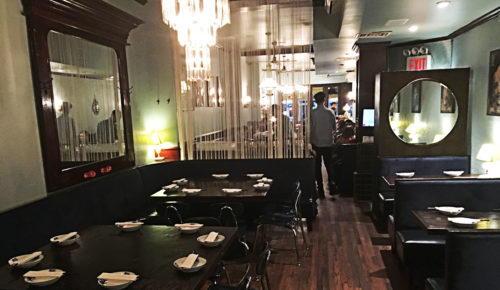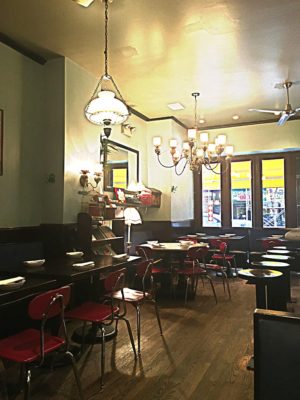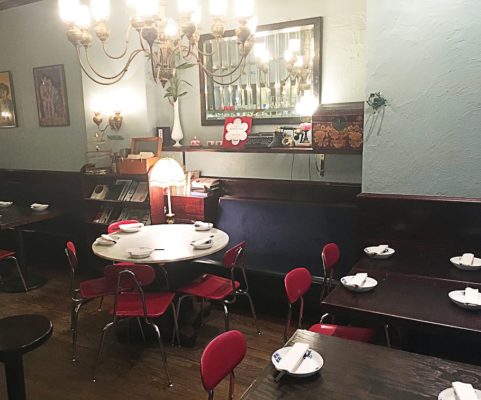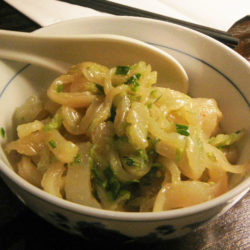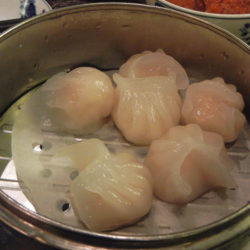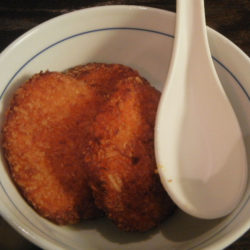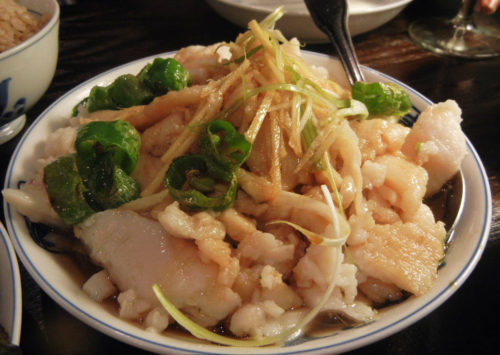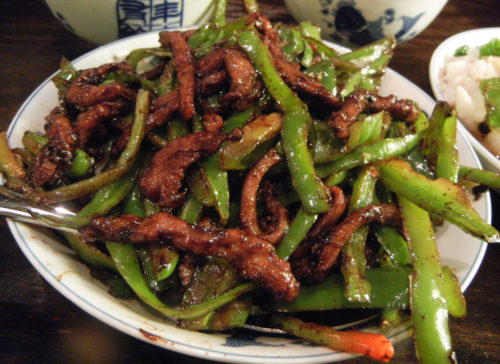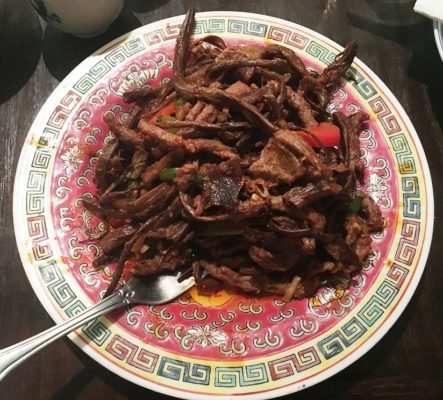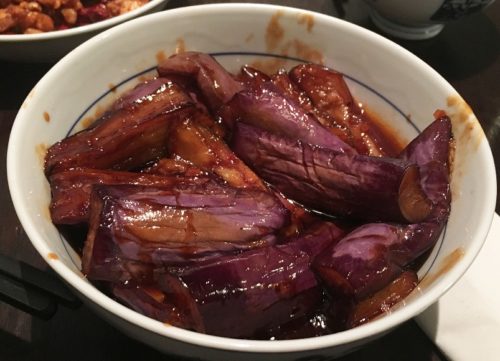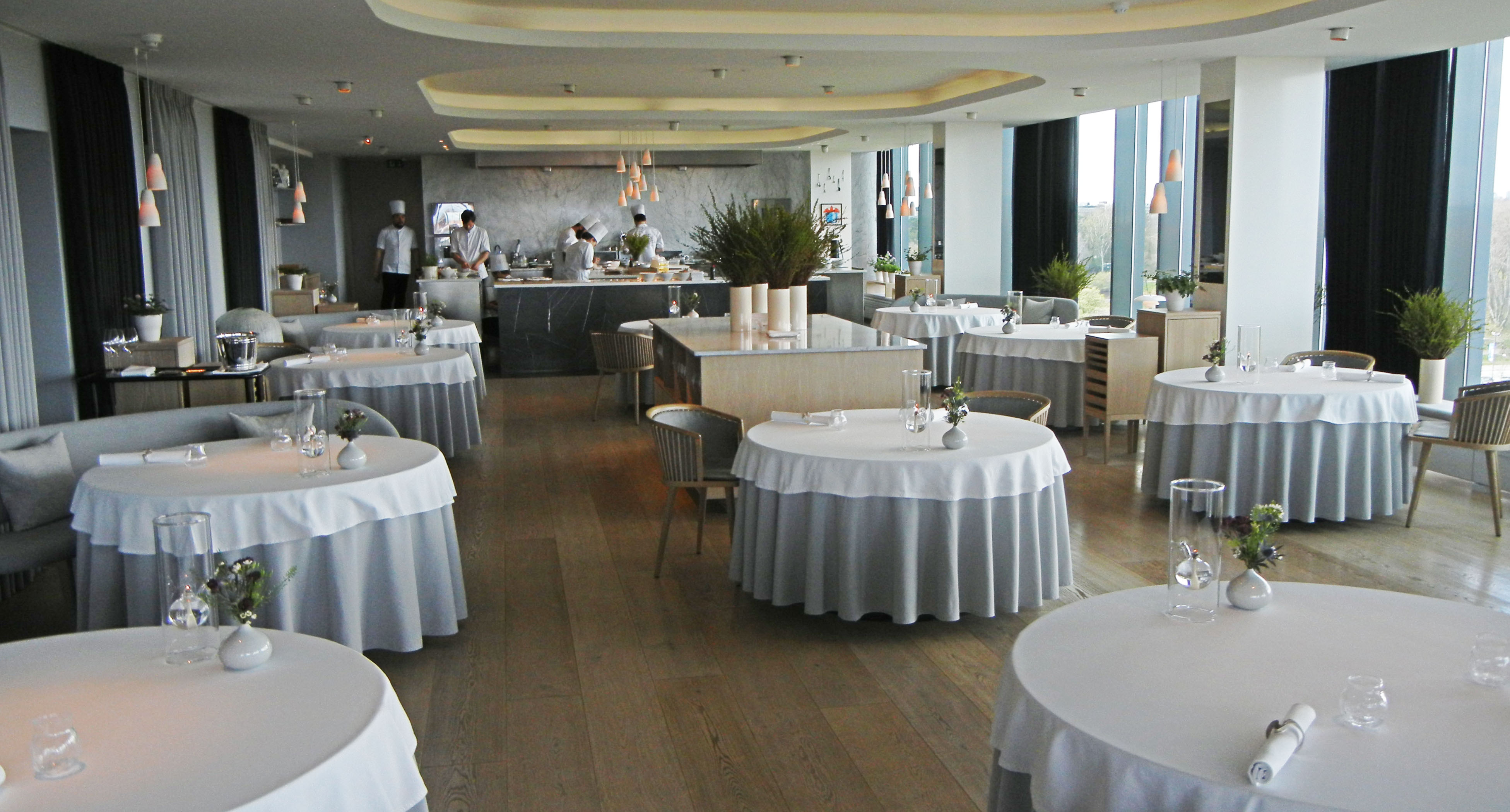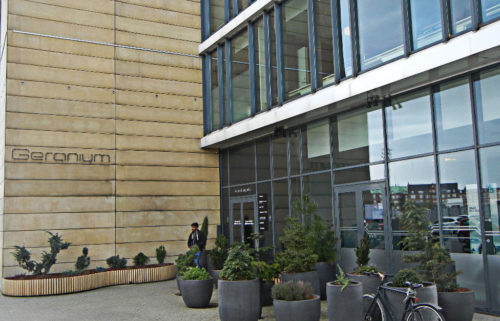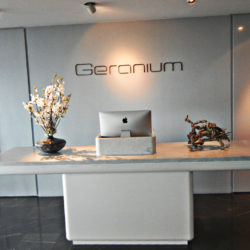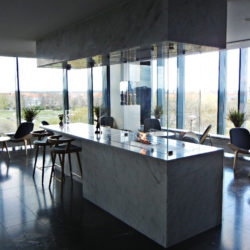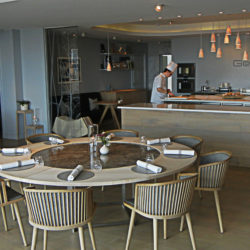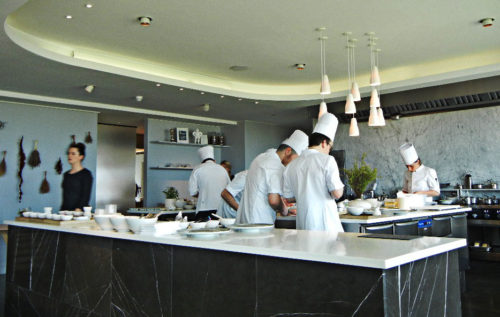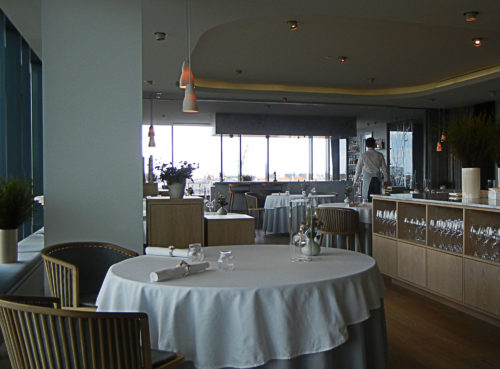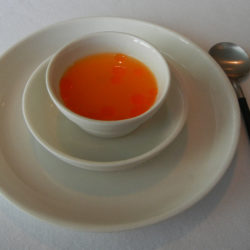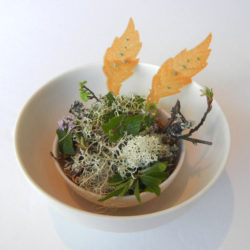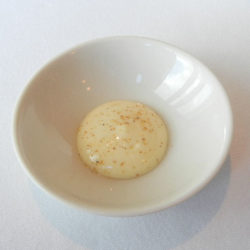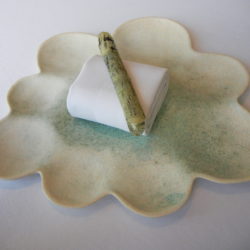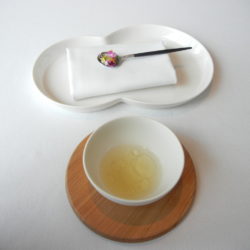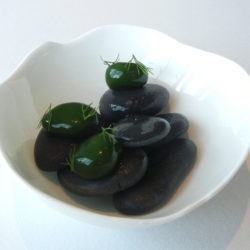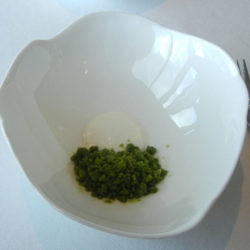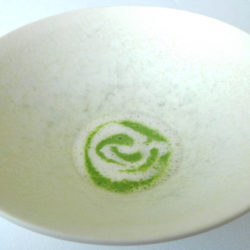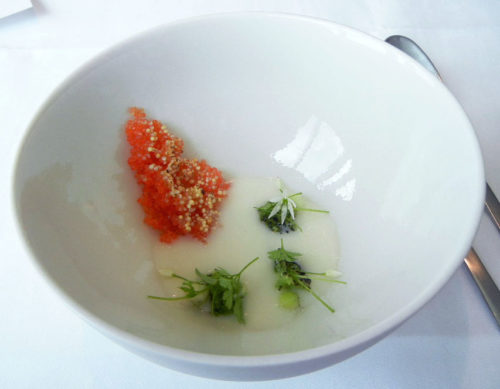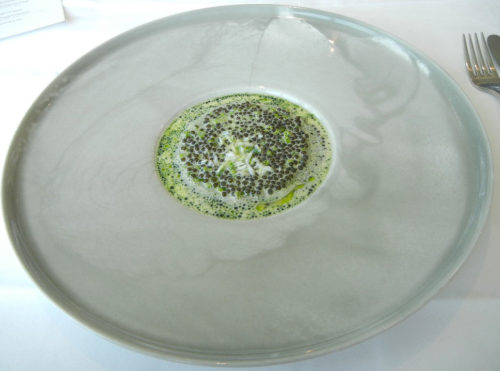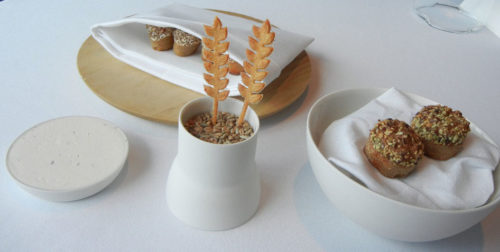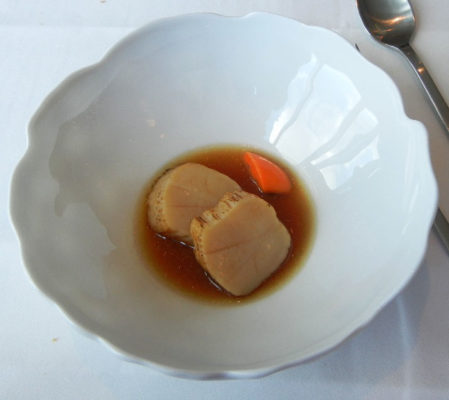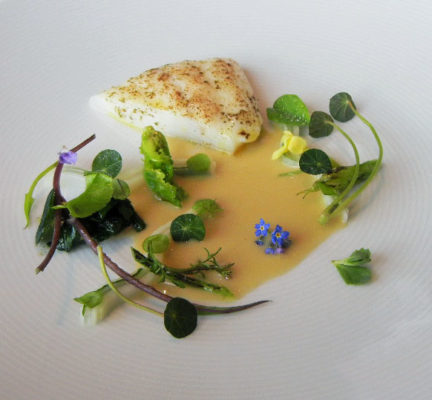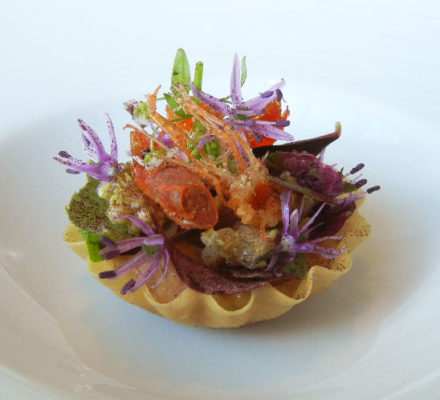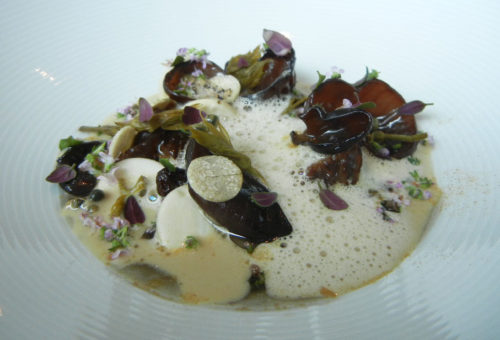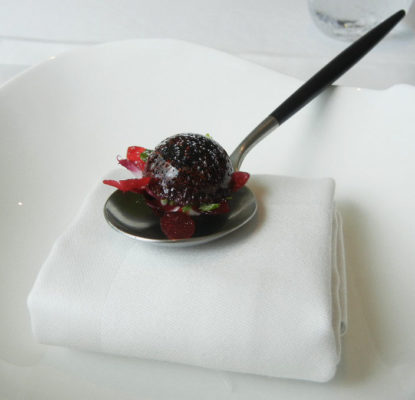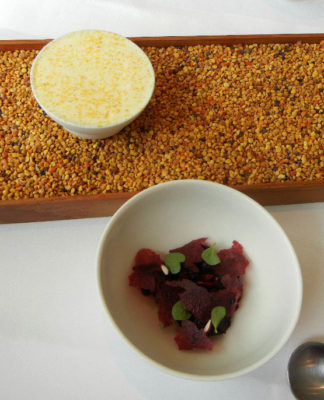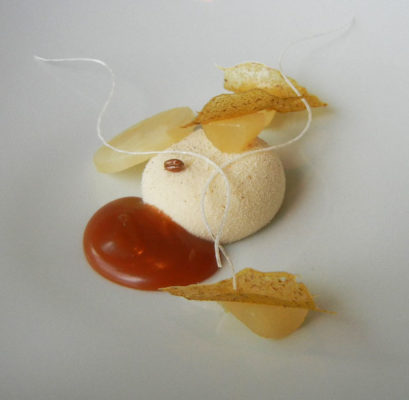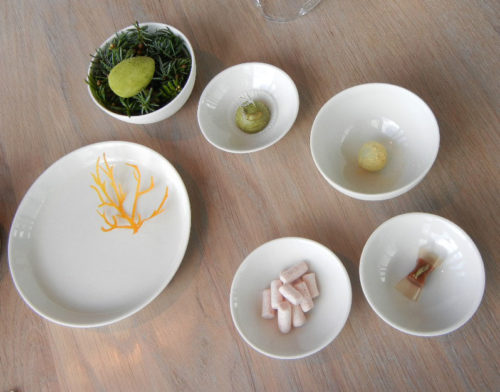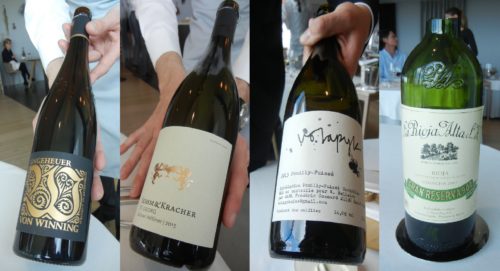8 ½ Otto e Mezzo Bombana
At Landmark Alexandra
Shop 202, 18 Chater Rd, Central
Hong Kong, China
+852 2537 8859
Website
Out of 120 plus restaurants to be awarded with three Michelin stars, there are only a handful of Italian restaurants with this distinction worldwide, and almost all of them are in Italy. The very first restaurant of its kind to be awarded with three stars outside of the Italian peninsula was 8½ Otto e Mezzo Bomban in Hong Kong. Owned and operated by Italian born chef Umberto Bombana, famously known as the “King of White Truffles” as he was the one responsible for introducing Hong Kong to this luxurious fungi.
Chef Bombana worked at Antica Osteria del Ponte with chef Enzio Santin before moving to the US, and then to Hong Kong where he was at the helm of the kitchen at Toscana in The Ritz Carlton. When that restaurant closed in 2008 he opened 8½ Otto e Mezzo Bombana two years later. Named after the chef’s favorite Italian movie directed by Federico Fellini, it debuted in the 2011 Michelin guide and was awarded two stars right off the bat, followed by the third star a year later which it has maintained ever since. Ascension to the top of the echelon was rapid and capitalizing in its success, Chef Bombana opened two other branches in Shanghai and Macau, which respectably has two and one Michelin stars. He also has the Michelin starred Octavium in Hong Kong and Opera Bombana in Beijing.
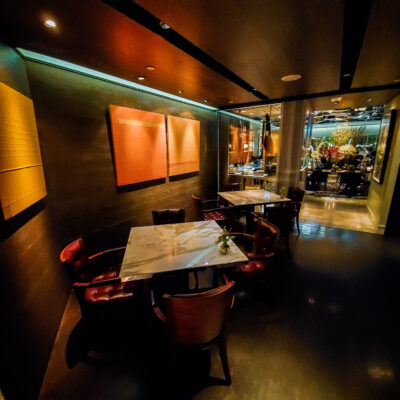
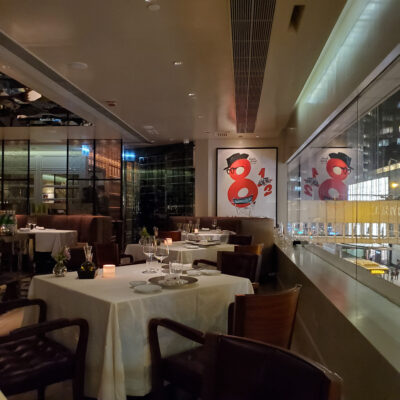
8 ½ Otto e Mezzo Bombana is housed inside the Alexandra House, a mixed used office and retail building in Central, Hong Kong. Guests are treated by a world renowned bar as soon as they enter. The bar itself has garnered numerous praises within the industry and has been included in Asia’s 50 Best Bars. The dining room had oversized tables covered in thick white tablecloths, paired with leather padded wooden chairs and semi circular swayed banquet seating. Its low ceiling is designed with abstract mirrors, and the glass windows have the view of Central’s skyscrapers.
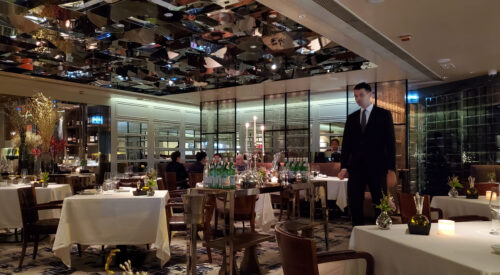
The dining options offer a la carte, lunch set menu, and a degustation menu available for both lunch and dinner. The choice for this visit was the degustation menu. Dinner began with freshly baked bread, crispy crackers and bread sticks served with butter on the side. This was immediately followed by an appetizer; a bowl of chanterelle mushrooms drenched in cream of mushroom sauce, and blanketed with generous shaving of white truffles. This was a fantastic way to start the meal.
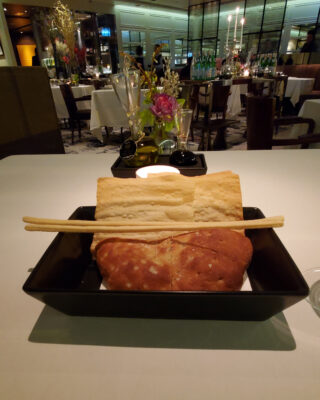
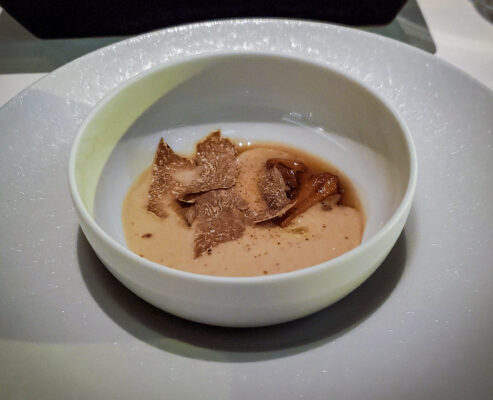
For the first course, Marinated Shima – Aji with oscietra caviar “Caviar Colony”, champagne dressing was served. Mariated Shima-aji, also known as striped jack, has a clean and delicate taste. Complementing the fish’s fatty features was the citrus element of the champagne sauce and the salinity from the caviar. Next was the Warm Blue Lobster broccolini emulsion, lobster jus. Perfectly cooked lobster tail was equally firm and tender. The lobster jus was robust and had plenty of depth. On this plate the kitchen fully showcases the diversity of the lobster by presenting it in a variety of ways.
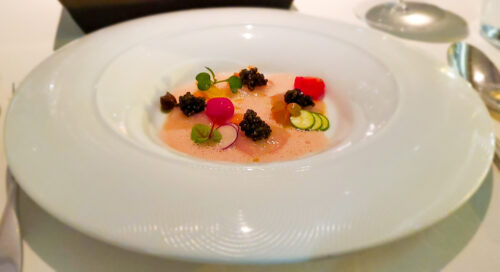
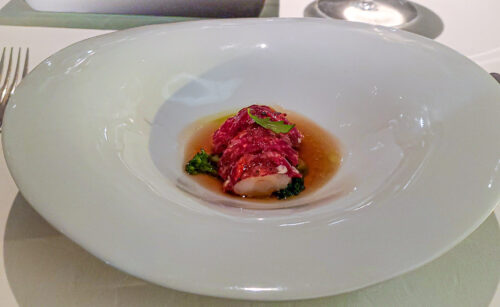
“Cotechino”, Italian sausage, baby lentils and red wine sauce was an extra course and was not included in the tasting. This hearty dish is traditionally served on New Year’s Eve and is made up of Italian sausage and lentils as its main component. The house-made Italian sausage has a terrific saltiness that was subdued by the bed of lentils it sat on. Supplying a pleasant sweetness was the red wine sauce. And the garnish of fresh vegetables provided texture as well as some colors. The next course was a pasta course of Veal and Mushroom Agnolotti roasted mushroom and mushroom jus. Cooked al dente, the agnolotti was draped with bountiful shaving of black truffles. It’s filling, a mixture of veal and mushroom was delicious, and the mushroom jus yields a sharp earthiness.
The main course was the Short Rib & Beef Tenderloin – whipped potato, red wine and plum sauce. Both the short ribs and the tenderloin were medium rare with a beautiful pinkish middle. They were succulent and full of flavors. The thick sauce from red wine and plum provided a certain type of sweetness that elevated the dish. Fresh vibrant vegetables and whipped potato were a pleasant companion on the plate.
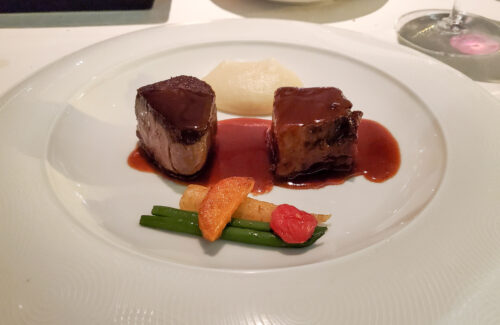
Prior to dessert, the maitre’d put on a show and prepared a Limochello table side. It was cold,creamy and zesty. This combination was a refreshing palate cleanser. Dessert was the Hazelnut- “millefoglie”, hazelnut gelato and vanilla sauce which has layers of sweetness, and accompanied by a cloudy, sugary, hazelnut gelato. The vanilla sauce added an extra component of sweetness to the dessert. More sweets followed after, in particular the ricotta cheese cake was terrific. Then finally chocolates for petites fours officially marked the end of the meal.
This multi-course dinner was enjoyable. Every plate had a combination of flavors that were uncomplicated and worked in harmony together. The use of luxurious and fresh local ingredients were well executed. The kitchen successfully applied their own modern twist to traditional Italian dishes. With the tasting menu, I opted for the wine pairing. It consists of six glasses of Italian wines that were thoughtfully curated by the sommelier. The wines paired were excellent and were extremely complimentary with every course.
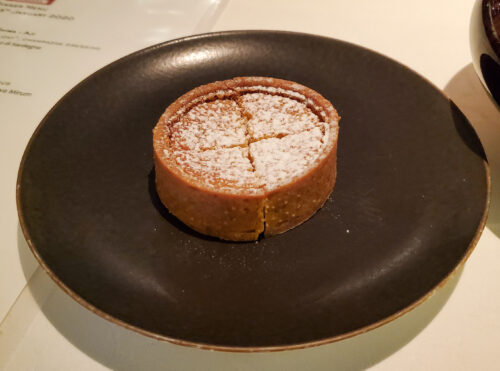
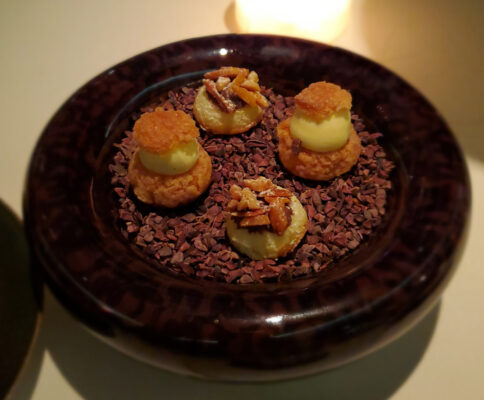
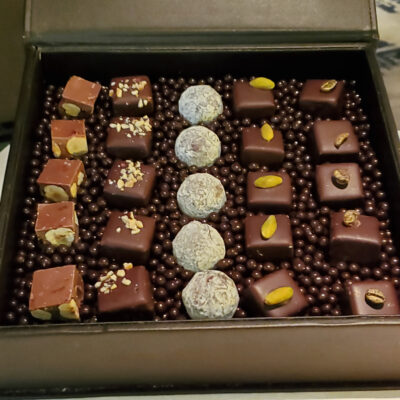
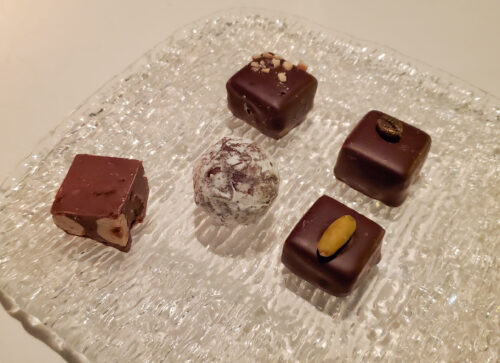
Service at the restaurant was ultra formal. The staff was a mixture of locals and foreigners who were all extremely professional and well trained. They were a bit stiff and almost robotic, yet they will engage from time to time. On the other hand, the maitre’d was very much involved and conversed with guests for a long period. It was nice to see Chef Bombana at the restaurant the night of my visit. He made his rounds in the dining room, stopping at every table more than once during dinner.
Wine Pairing:
8 ½ Otto e Mezzo Bombana is popular among traveling gastronomes, business people and especially the well-heeled Hong Kongers. When I dined on a Monday evening, the dining room was boisterous and every table was occupied. Dinner is pricey; however, it is still slightly affordable than other three-star meals in the US, Europe and Japan. Even more approachable compared to other three Michelin starred places in Hong Kong.
With all the accolades that 8 ½ Otto e Mezzo Bombana has received, this restaurant is widely considered as among the best in Asia. However the question still remains: is this the best Italian restaurant outside of Italy? That’s for an individual to decide, nevertheless after my visit, I considered this a fine restaurant where one can have a wonderful evening.

